My ‘Final Ascent’
My NH48 4K Submission Essay
I woke early in the crisp cold morning in Dry River campground ready to ascend my final peak of my New Hampshire 48 and began to prepare for the day I would reach my big goal for the year. In 2020, I finished the year by climbing Maine’s 14 4K peaks and had found a new love of mountain climbing that had devoured weekends climbing and many evenings planning to accomplish my goal of completing all 48 in a single calendar year.
This one would be a bit different. I was moving into “Shoulder Season,” that period between fall and winter when its cozy warm in the valley and frozen and blustery on top. The forecast was not bad – 15 mph winds and temperatures hovering between 25 and 30 at the peak, but those forecasts were often good joke material for hikers on those peaks experiencing the real conditions. Prepare for everything, I had learned. I changed out of my sleeping layers into my hiking layers in my tent after I had my breakfast and prepared for my hike up Carrigain. Dang! I had forgotten my White Mountain Guide that I usually had with me, so I was going to fly a little blind since I had not read the official trail description (more about that impact later!). Without service in Crawford Notch, I would have to make do until I climbed high enough to get a signal.
I did some stretching to get the kinks out, trying to determine if I was about to overdo it. Yesterday I had climbed Canon and the Kinsmans and had decided to try to finish the next day. Despite the miles, I felt refreshed and ready, no, eager to take on the final peak in this journey. But don’t get me wrong. This is the final peak in my first run-through of the famed New Hampshire 48, but it will not be the last. Though I may visit some of them a bit more frequently than others. Some (like all of Franconia Ridge) I need to visit on a day where I can see them and see from them! I was ready for Carrigain, which I had saved for last based upon the purported views. Isolation I had done earlier, thinking that winter would make late ascent up Glen Boulder more difficult than I cared to try for my first ascent.
I arrived at the trailhead for Signal Ridge Trail without having read the Guide, and believing I had not downloaded my Guthook map. I pulled out my Garmin app. It showed that the trail started on the other side of the bridge… but the sign was here. Dang! The Garmin map was old, and the trail must have been rerouted. Press on, there is a clear trail to follow, and I have 10 miles to finish (or was it really 10.6?).
The great part about hiking solo (I did 45 of the peaks solo) is that you get tons of thinking time. The actual act of putting one foot in front of the other, especially on level ground, is not a brain taxing job, and Signal Trail has 2.6 miles before the going gets steep. As my mind wandered, I breathed deep the late fall feeling of the forest and drank in the playful sunlight sprinkling through the leaf remnants.
My daughter had asked my wife the other day, “Why is he doing it? Is it a fitness goal to achieve, something he likes to do, or is he trying to get something out of it?” She is studying ecofeminism and while I do not fully understand ecofeminism, I can understand some of her concerns. As I was climbing up Carrigain, I asked myself that question, because it is not a simple answer. I could give Thoreau’s answer and say I went to the mountains to “live deep and suck out all the marrow out of life” but that seemed a bit much. While I do bring the desire to learn what the mountains teach (and I learned a few lessons this year!), the routing and sucking and shaving that Thoreau was after seemed a bit more violent that I was after.
I have found that bringing a meditative approach to knowing the mountain has served me better than a consumptive approach. Runner Tommy Rivs speaks to the great balance between plants and animals, how the exhalation of plants (Oxygen) becomes the inhalation of animals, and the exhalation of animals (Carbon Dioxide) becomes the inhalation of plants. This balance is a mutual dependency and a collaboration, a cohabitation of the earth that we have upset without fully understanding. I go to the woods, to the mountains to do my own sort of forest bathing, to restore some of the balance within myself.
But that day, I started a little askew. I started looking for the trail junction too early. The trailhead sign says it is at 1.7 miles, and after crossing the brook and almost getting lost, I was looking for a trail junction to validate my path. I decided I had missed it and turned around. I even almost convinced a couple of women hikers that we had missed it until one of them mentioned a “recent trail reroute.” Then I remembered how the other reroute was not on my Garmin map and I admitted to them that my maps might be out of date. Fortunately, one of them had copied the Guide pages and pulled them out to assure us there was indeed a trail reroute and the junction was now at 2 miles! We turned back around and found the junction a short distance down past where I had turned around. Later I realized that I had indeed downloaded my Guthook Maps, I just needed to refer to the Pemigewasset Wilderness ones not the Presidential ones! Things were looking up! And that’s when the trail turned into a stair master.
I talk to the mountains as I climb them. Maybe some people would think that weird, but I introduce myself and say hello to the mountain as I begin my climb. I am not an animist, nor do I believe in the personhood of the mountains, but there is a presence and a glory to get to know. As I seek it out, I invite the mountain to teach me about itself, that I may come to learn what type of personality it has. By the 48th peak, I feel like I could begin to feel personalities of some of the mountains, distinguished personalities. While many of them might be similar, none are pure clones.
Having visited Katahdin as a child and having climbed it at least 8 times, I have come to understand its peculiar personality. It is fickle and not to be trifled with, but it also has quite a sense of humor. This morning I felt that Carrigain was going to make me earn my ascent, but I felt a sense of wonder waiting to be revealed as well. I was not wrong.
As I climbed, the temperature dropped and at some point, the puddles of water were less puddly and much more sparkly. Now I had to watch for icy spots that could trip me up. The wind picked up also as I achieve more elevation—cold dry wind against my sweat-soaked t-shirt. Hike faster I thought, but eventually I had to put on my fleece to stay warm in the wind, despite my exertion.
As I hiked, I thought about the impact we have on the mountains. The Pemigewasset wilderness was full of old logging evidence as much of that valley had been logged before becoming protected. You could almost feel the forest’s exertion to heal and grow wild again. When I hiked out to the Owl, it was during leaf-peeping season, and every one of the porta-potties set out were full and trashed by the number of people that had come through Lincoln Woods Trailhead. I have seen more toilet paper and human feces this year than I care to mention – why can’t people control themselves? Every hike I brought out someone else’s trash. Every hike I found evidence of people not treating the mountains as they should. Our impact on these mountain trails and the animals is not a small one. Almost to Lincoln Wood trailhead, I witnessed one family of leaf peepers allowing their son to use a stick as a sword on a living bush. No one said anything. Neither did I, but I finished my hike angry that day.
Do we do a good thing my climbing these mountains? By having these lists? I do not like to call myself a “peak bagger.” I ran into a hiker on Canon that talked about doing the Tripyramids the next day, then Moosilauke on Monday because it was raining. He said he had seen the views, he just needed to bag the peak for his grid. Now, I am not against the grid, I may yet do it, but I loved the Moosilauke hike so much, that talking about “bagging” that peak seemed sacrilegious, like objectifying a woman, or stereotyping a particular individual. It just seemed wrong.
Then there is the question of the grey jays. I have always been a bird lover and feed them in my backyard, but these jays seem extra special. Do you feed them? Should you feed them? Let me say, the first time they came to my hand on Hancock was a thrill of delight and amazement. As I came to the first viewpoint on Signal Ridge that day there was a jay that watched me take in the view. He was looking to see if I had food. I pulled out the pistachios I brought for him and put one in my hand. He came and took it and flew off to stash it. I got a few more nuts in my had and got my phone at the ready to get his picture. He came before I was ready, and I had to tell him to wait. He looked put out as he cocked his head at me from the top of a spruce with that beautiful view behind him.
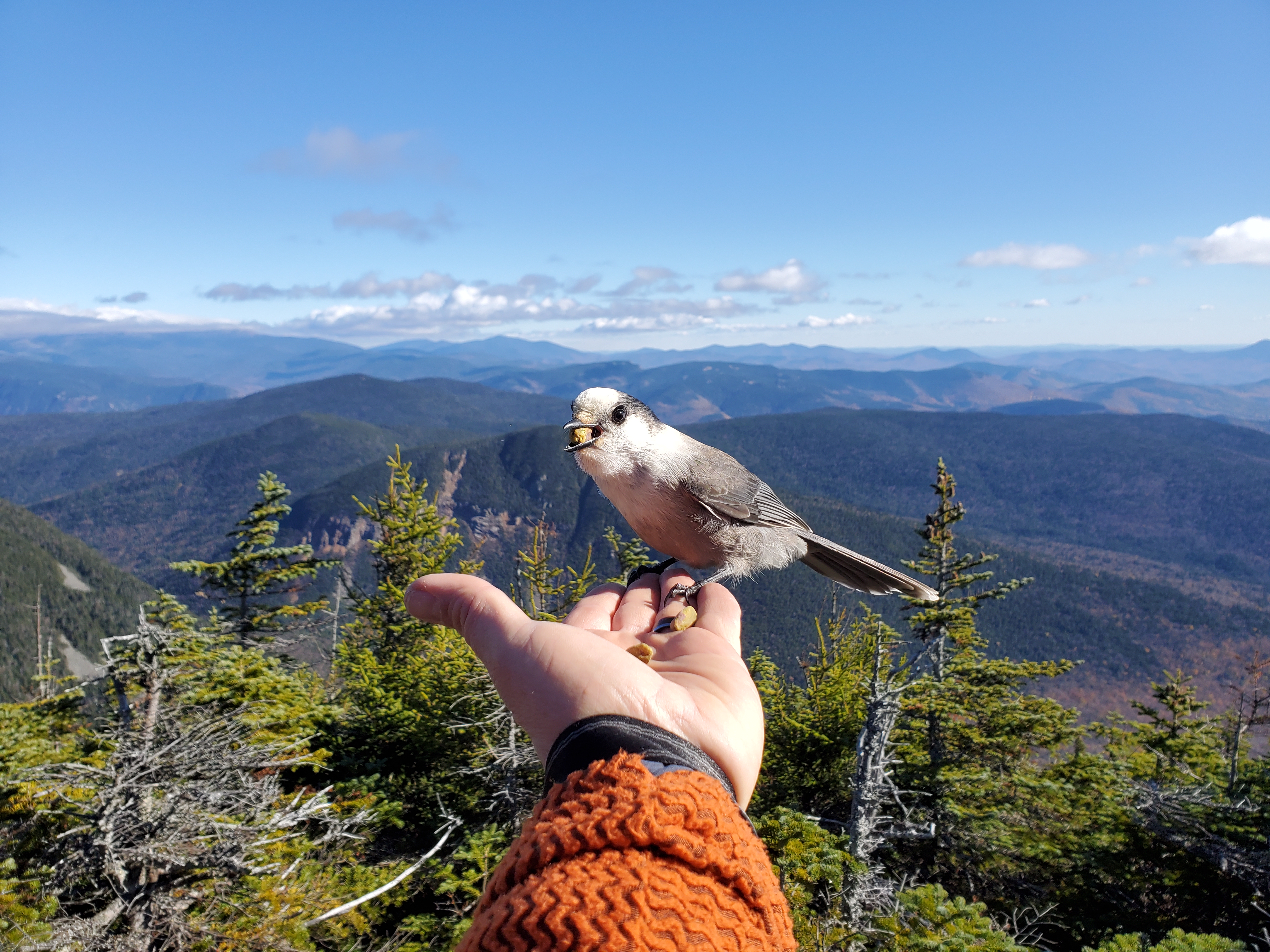
I said, “Come and get it” and opened my hand, taking pictures as he landed and filled his cheeks. I think he will be fine. He was a delight to meet and a wonder to see him against such a view. The wind had virtually died as I crested the ridge and the sun was out and powerful, beginning to melt the ice on the rocks. Walking across Signal Ridge was one of those times you have in the whites where you know you need to keep moving, but the view is so good you are worried you will trip and fall because you cannot stop gawking at it! It only seems to get worse the nearer you are to a cliff edge or dangerous fall.
But the wonders of Carrigain were not over and neither was the ascent. The trail descends into the woods, but it is a delightful ascent to the south summit. As I approached the tower, a feeling of relief, accomplishment and delight at the mountain overwhelmed me and I had to pause for a moment before I climbed the icy tower steps to take in what was an amazing view. The sun had not yet melted the frost from the tower boards, but I held onto the railing and walked a full circuit. I had done it! The list was completed!
The wind had picked up a bit, so I dropped down to the campsite (the old warden cabin site?) for my lunch and greeted other hikers on their way up. I sat there as light snowflakes danced in the sunbeams and just soaked in the moment, the forest, the smell of the partially frozen moss and the smell of the spruce and balsams. I sat there breathing in the phytoncides, killing any stress that I had not sweat out on my way up. While forest bathing may be new to some, I grew up in the North Woods and spent whole days reveling in discovery of little glens in the forest, breathing in pine, covering my hands in sap as I climbed and drinking like Gideon’s men from brooks when I was thirsty. Coming to the mountains to me is coming home to where I fully exist. It is a place to remind me of who I am.
The past year was not just a year of COVID19. Since I began this mountain quest, I lost my stepfather to cancer and my father to Parkinson’s. I have had times where I was not OK and times where I was ok and times where I felt like I knew where the universe was true. The last of those feelings is best felt on a mountain. I climb mountains to come to know them, to know myself and to know the truth of the universe and my place within it. I climb just to be, and to be one with all.
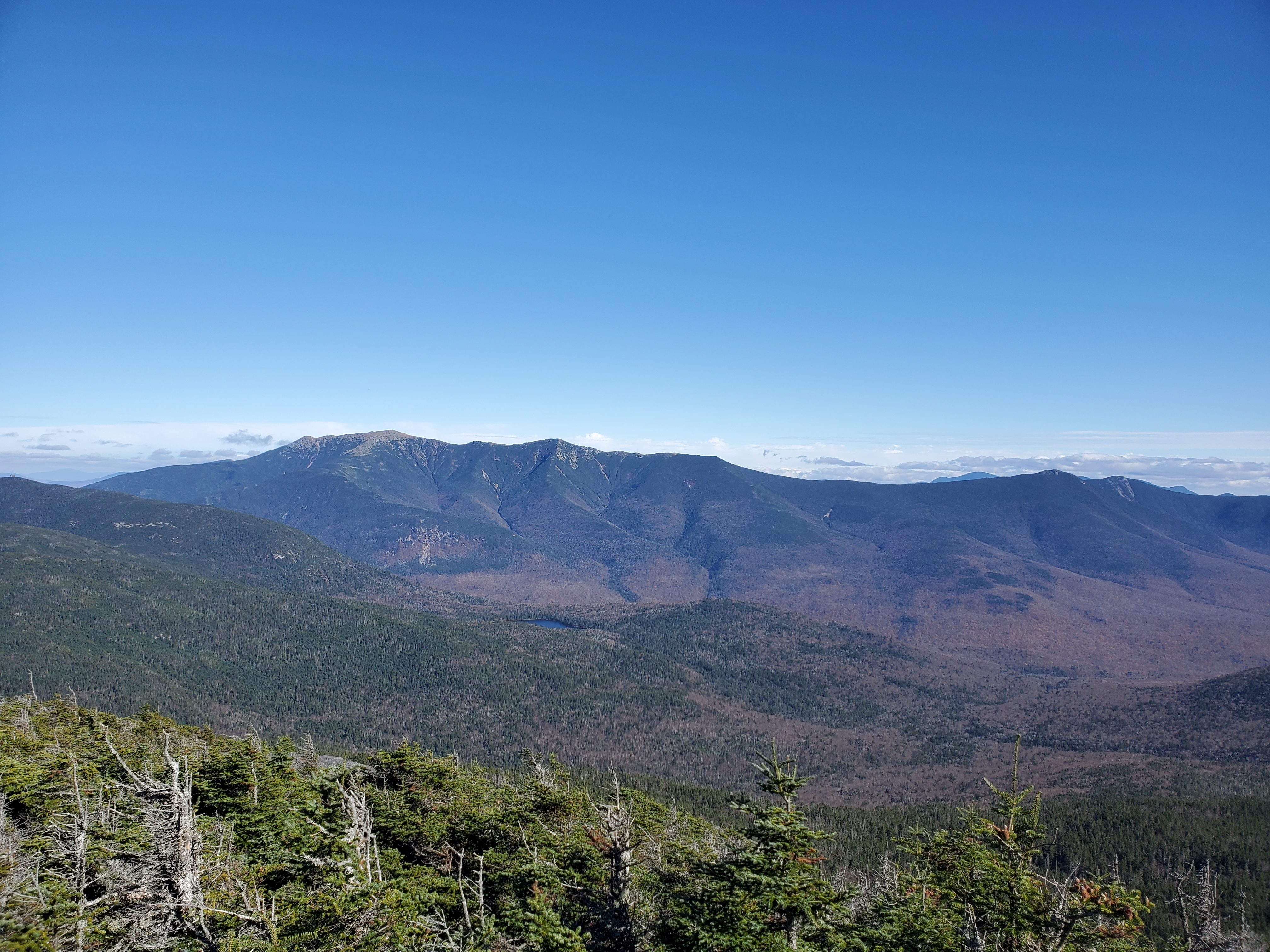
Leadership Resources
Leadership is not an innate trait. While some people may have more aptitude for leadership, to do it well it to practice, to learn, to fail and to practice some more. It truly is a journey to excellence or a descent into… well… something not good for you or anyone around you.
So how does one learn to be a better leader? Basically it is the same as any other skill, find someone who is good at it and learn from them. Leadership being a sort of skill that has to align with your own aptitudes and tendencies however, is not the same sort of skill as blacksmithing or bicycle repair, so that journey to being a good leader is different for everyone. Unpopular reveal: not everyone should aspire to be a Jack Welch type of leader – while he was a great leader, he was only one kind of leader, and not everyone could, or even should become a leader like Jack Welch. Think of your favorite coach, your favorite teacher, a community leader or a pastor in your church–all different kinds of leaders. Ultimately, your journey to be a good leader will be different than everyone else’s, and your definition of what it means to be a good leader, while perhaps the same in principles as Jack Welch, is likely to look very different in practice. Not because you cannot be a powerful CEO and business leader, but because you may not be gifted or motivated in that same way.
Developing leadership is to become self-aware to a level that allows you to leverage your strengths, compensate for your weaknesses and to care more about how to use your skills and aptitudes to lead and inspire others than to care about your own comfort. There is no greater satisfaction than to see your impact on the lives of others because of your leadership investment, but it is not a quick path to self-gratification either.
I am often asked about what resources I have leveraged in my own leadership journey (in which I am no where near any finish line), so I thought I might blog about it here just to provide a resource to reference each time or even expand as I find new resources. Some go way back, some are new and some were not as impactful as I would have hoped, but the list and some notes on each is below, in no particular order.
How to Win Friends and Influence People – This classic still deserves a re-read every few years. If you want to lead people, you have to know how to be a friend and how to influence them. Treat people well, know how they are motivated and say their name often. If you are a type-A personality / task-oriented person, read this book every few years–it will change your life as well as your leadership style.
21 Irrefutable Laws of Leadership – No one can give you succinct rules of leadership like John Maxwell. The Law of the Lid, the Law of E. F. Hutton. I have used these laws over years of influence and leading, and they are always true. Memorize them or put them on flash cards and carry them with you.
Daring Greatly and Dare to Lead are the Brene Brown classics that everyone should read–they will make you a better person and a better follower. Get past the toxicity that is so much power-lead leadership and learn to have the hard conversations, learn to lean into vulnerability and learn to lead with your whole heart. Get ready to rumble!
The Leader’s Journey – This book taught me to think about leadership in an entirely different way, learning to see the systems that lead to specific results that are almost impossible for those bound up in them to change, and then learning how to change myself in order to invite the change that the systems needed. This book was where I first learned what I needed to do to be calm leader (or to lead calmly, in any case, I am still working on that!).
Leadership On the Line – I read this book for a class in seminary while leading a very complex technical project at work whose delay and cost overruns had already lead to the dismissal of the divisional CIO. The project was the most expensive in the business unit’s history and was not going well. But leadership is not forged in times of ease, but in times of high stress. I used this book as a playbook to help stabilize the project, the people that were part of it and lead us to success that ultimately enabled explosive growth in the company. All because it helped me focus on leading the people who got it done.
The Five Dysfunctions of a Team – Where there is no trust, there is no team. This book through its parable style story telling helps teams work through building trust. If your team knows it needs it, and cannot follow this book to get to trust within a year, time to lead or leave. Diversity of opinion makes the team strong, but only if the team can learn to trust one another.
Team of Teams – In this world of high fidelity communication, the need for immediate response and cross-functional abilities requires a different kind of team. In this book General McChrystal presents how they created these teams in the Iraq counter-insurgency and how they can be created within the business world. If you are responsible for helping to create high-performing teams, you have to read this book.
Seven Habits of Highly Effective People – Another classic work that identifies the seven habits you should be practicing as a leader and as an individual contributor. If you cannot rattle them off right now without looking, go read it again.
How full is Your Bucket – There is a greater amount of self-awareness required of leaders than of people not leading. This book helps you work to identify those things that energize you versus drain you. One of my professors called this the 70/30 rule. Seventy percent of what you do should energize you (AKA, fill your bucket) and thirty percent can drain you. If you get this out of balance, you burnout fast. Know how to balance your work.
The First 90 Days – For starting a new job, this book is invaluable to get you jumpstarted. Use it as your blueprint/checklist and you will be adapted to the new role much faster.
You Are What you Love – This is not so much a leadership book, but a faith book that was useful in orienting me to the thing that matters most. It helped me understand that the thing to pay attention to first was what was I orienting my heart towards, what was I loving? Because, whether I knew it or not, that was the most important thing in my life. Ensuring that my love was directed properly is the first step to ensuring everything else is directed properly.
Drive – People crave autonomy, mastery and purpose. As a leader, if you can provide an environment where they get those things they will stay there forever. This book forever changed my orientation of what I attempt to provide for my team members.
The Coaching Habit: Say Less, Ask More & Change the Way You Lead Forever – This book transformed how I executed my one-on-one coaching meetings with my employees. The idea is to use questions to help them unravel and think through the challenges they are facing. The truth is, ultimately they are far better equipped to work their way through those challenges than you are, they just need some coaching to enable them to do it, and the coaching questions work very well!
Principles: Life and Work – IN NCIS Leroy Jethro Gibbs has a set of rules, and that inspired me to write down my own but that was before I knew Ray Dalio had written his down. They are a great read, if for no other reason than to inspire you to write your own set.
Leadership and Self-Deception – So much of leadership is about communication, and understanding how your words impact others. This book helps you understand that how you present a challenging topic may actually trigger self-defense mechanisms in the other person and lead to an outcome that you do not want. The book teaches you how to identify that situation and avoid it, leading to the desired outcome and ensuring all people retain their dignity in the situation.
Leadership Agility – Different times require different types of leaders. This book identifies five different leadership styles and when to use those different styles. You may do some of this instinctively, but having the semantical range to be able to label and identify each can be empowering and leader to a more conscious, more bold approach to each of the styles as you apply them.
The Fearless Organization: Creating Psychological Safety in the Workplace for Learning, Innovation, and Growth – You would think that surgical groups that do not report many errors have a higher success rate than those that do report errors, but studies show that to be inaccurate. It is teams that have the safety in exposing errors and failures for correction that have higher success rates. This book presents how to create that psychological safety in a team in order to enable that successful growth.
Servant Leadership – Last on my list, but first in my heart. This classic presents what is now a common label of “servant leadership” but was a relatively new innovation at the time of its publication. What does it look like to approach leadership as a servant, seeking to uplift and enable others, to serve institutions and to seek the greater good of society? Read this to get your leadership style firmly grounded in a servant leadership approach.
This is my list, for now. I am sure I will add to it over time, so check back for updates. May your leadership journey be as steep as you need to grow, give you vistas to reward your efforts and moments of repose and rejuvenation to keep you going.
Last Updated 6/2/2021.
Mindful Intentionality – My 180 by 50
We crave markers of time, monuments to accomplishment. We mark time in months, years, decades, we place stone markers to mark the end of a life, we engrave monuments with words celebrating events, we celebrate and often fear, yes, fear, the annual celebration of our birth. And as the number of those years get larger, we act as if that annual celebration is something were something we could ignore, skip, delay or otherwise act as if it never occurred. We begin saying we are 29… again, as if 29 was the pivotal year when we stopped aging, stopped growing and should be forever cast in stone. And the decades that roll that first digit over to restart at zero seem to be the biggest fear of all. Starting with 30, worsening at 40, it is downright tumultuous when 50 hits. To be half-a-century! When we were children 50 was ancient. We would never be THAT old.
When I turned 28, I realized I was not going to be a member of the dead-by-27 club, but by then I was focused on living well with my wife and first child. By 29 we had 2 children, both in diapers, and I did not see the need to stay forever bound to that age, there was so much to learn. Thirty passed by barely noticed, as we focused on raising toddlers and all the devotion that requires. By 40, I declared I would not be over the hill, but rather on TOP of the hill and I convinced 9 other family members, including my wife and both children, to climb Katahdin on my birthday leading to nine of us standing together at the summit of 5,267 ft that day. We slept that night in a lean-to, roasted marshmallows and had cake for dessert. Forty did not seem too bad.
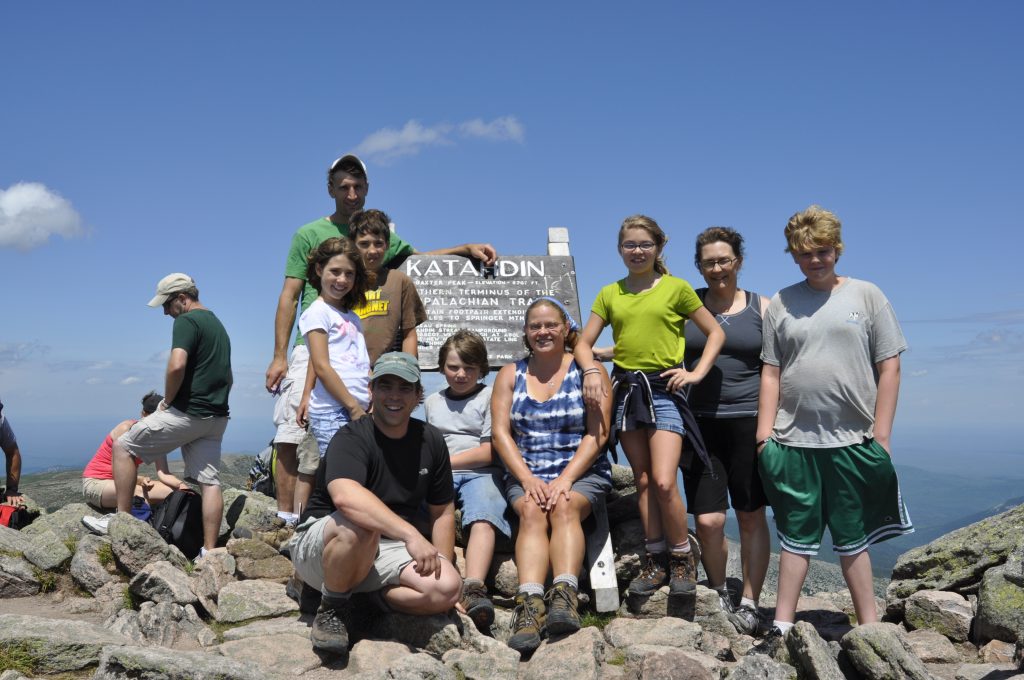
But now I approach 50, the big FIVE-OH, and the marker seems a bit more significant than any gone before, in part because of a desire to remain healthy and in part because this is a time of significant change in the family. We moved to Maine just before I turned 48 and now both children are in various stages of college and marriage, making their own family life. Then on approach to turning 49, just as I was about to spend the year watching that number nine roll over slowly into some uncharted waters, COVID19 pandemic hit. It is like when you are doing one of those trainer videos on a tread mill and the instructor or the program abruptly raises the incline without warning. What you thought was going to be easy has a little more difficulty thrown in the mix, requiring a bit more grit to get through it.
In many ways the pandemic has not adversely affected my family, aside from restricting our gatherings and bringing the children home from school. My job has continued, albeit without the extensive travel I had been doing. But not having that travel and having a forced recalibration has allowed us to take stock of the present and make conscious adjustments that otherwise might have been incidental, or perhaps not even made. In a time when there is so much outside the realm of your control, it is human nature to refocus our efforts on those things that we can control.
So as the pandemic forced us to tighten our circles and postpone our plans, and as the children arrived back home for their online classes and we wondered what damage this virus would do to us all, I began to prepare to face my fiftieth year. Because that fiftieth year begins the moment that you turn 49, and I would do so on July 23. How did I want that year to begin, what markers did I want to define to mark success? When we had moved the year before, we had Marie-Kondo’ed our physical belongings and it was a spectacular thing. As I was facing the beginning of my fiftieth year on this green ball I was ready to begin Marie-Kondoing my life.
This began with establishing a mindful meditation practice, a practice I had tried various times prior to no avail. This time I applied what I knew about establishing cadence, read through Meditation For Fidgety Skeptics by Dan Harris and started 5-10 minutes a day. Eight months later I am up to 20 minutes a day and credit this practice for helping me stay sane in a year that should have thrown this extravert off my rocker.
The mindfulness revealed something to me however that was quite disturbing to someone who had always claimed to be a control-freak. I once had a bumper sticker that read “It’s a Control-Freak Thing: I won’t LET you understand.” I discovered that much of my previous 15 years in many aspects of my life, including work and leisure aspects, I had mostly reacted rather than been intentional about my life choices. Making decisions in the moment without regard for a larger plan. This is in part because I had achieved my career goals in my thirties, and then started Seminary seeking a new set of goals that never really materialized. Instead, I had just made in-place decisions without being guided by large goals. I think that is what most of us actually do. Life, after all “is what happens when you are busy making other plans.” Not that there is anything wrong with that approach, but it is not one I prefer to accept.
As a result, intentionality became a theme of my approach to turning 50. I would use this marker in my life as a fulcrum, a point to slingshot around and reorient the deepest rhythms in my life. As a leader in software development, I have often used cadence to help teams adjust behaviors and adapt to change, but I had only rarely tried it on myself, on my own behaviors and desired changes. That would be the first adaptation, I would begin by using my new mindfulness practice to make changes to my own self, to hack my brain and my behaviors. But no good project should be nameless, so I began to ponder what I could call this project of intentionality, this effort to hack my system, to reorient myself around this half-century marker.
I had been trying to get back to what I liked to call my “fighting weight” for years. Each year a New Year’s Resolution made and broken, but the efforts had kept my weight down at least, and had kept me active, but had not gotten me below 200 in some time. I wanted to be 180, I figured then a laudable goal would be to be “180 by 50,” and then the word play became too obvious. The theme, the name, the effort became clearer to me than it had been. Those things that I needed to change, to reorient were those things that I needed to change the heading of by 180 degrees. This would be my “180 by 50” project, of which weight loss should only be a side-effect of better intentionality.
Then I made a spreadsheet to list those items, those goals which would represent an intentional change in behaviors. These types of things are so hard to measure, but without measurement can we really know that we improve?
As 2020 had begun, I had declared it a year of “Enjoying Maine” since it would be our first full year back in my home state, and, applying the principle that you cannot improve something you do not measure had begun to track my miles hiking, hours paddling and nights in a tent. As 2020 closes, I did not meet most off my goals, but I can tell you I hiked 250 miles, spent 20 nights in a tent and paddled for more than 33 hours. Measuring them and recording those miles and nights inspired me to do more.
I began to apply the same logic to my 180 by 50 plan. Adding the weight target was easy, but it should be a side-effect of the others. I added a goal to establish a daily yoga, meditation, devotion (YMD) practice. I added goals to track and have better prioritization of my dental, physical and financial health—things which I have largely neglected while trying to do whatever it is I was doing at the moment. I added things I had always wanted to accomplish: run a 5K; Climb all Maine 4,000 foot summits; run a 10K; establish a writing cadence.
The list remains open and I continue to add to it, even now, five months into my 50th year. Some things I have accomplished, knowing that even small victories give encouragement to continue. I completed my climb of all of Maine’s 4K summits on November 28, having done six of them in the month of November. I finished my first run of a 5K on Christmas Eve, with energy to spare after! I have a regular cadence of yoga, meditation and devotion that helps direct me better than ever before.
As I regularly review my progress towards these goals I have come to realize that the steps I have taken to become more intentional and to approach this life marker of 50 years alive are simply a distillation of so many of the self-help books I have read over the years. Whether it be the Seven Habits of Highly Effective People or Good to Great or Daring Greatly. It only begins with intentionality, there are serious behavior changes that need to be put in place if those intentions are to be reflected in your life. At some point, you need to take the first step up the mountain, begin that training course, put down the muffin and step away.
The first step I have discussed above somewhat, but I will call it out as Mindful Intentionality. This is where you determine WHAT you want to do, and what are they ways you need to apply motivation to yourself so that you will do them. I am motivated by checklists and plans, but what motivates you? Do you need to promise yourself a reward if you meet that goal? You have to figure out both the WHAT and the HOW. What is it that you wish to intentionally do? Perhaps pick something you can do in smaller steps so that you can celebrate those small victories. That first step is to pick a goal and decompose it into a serious of steps to get to that goal.
The secret sauce to this step is to define the HOW for you. You need to define how to “hack your self” and while there are various ways to do this, it starts with defining your motivations. If the goal is a bar that someone else defines, or some standard that you do not personally hold, you will fail to reach it. You must make the goal your own, and driven by your own personal choice, not the judgment of someone else. For example, my desire to lose weight is because I want to lessen the impact on my knees of the hiking I do. Thirty fewer pounds to carry up and down a trail is a significant motivator to lose that weight. I backpacked the north half of the 100-mile wilderness this summer to drive that motivation deep into my soul. Jim Collins suggests that we could hack our motivations by creating what he calls a personal hedgehog. (See his explanation of the hedgehog and fox in Good to Great.) This is a device to make decisions that align with your passions (i.e., you want to do it), your ability to do something well (i.e., you are good at it) and make you money or enrich your life (i.e., it is profitable).
In any case the goal of the Mindful Intentionality step is to constantly consider what you are doing and how you are motivating yourself to accomplish those goals. Part of the meditation may be to reflect on those times when your behaviors were not aligned with those goals, what was the motivation that pulled you astray, and determine if there is something you need to do to counteract that motivation the next time it occurs.
The next important ingredient is to make behavior changes on a regular rhythm. This is just accepting that humans are made to do things on a regular cadence, whether it be meals, sleeping, work, play or that new time of meditation, practicing piano, running or calorie review. Setting aside a regular time for the activity is key to ensuring it is accomplished. Schedule it on your calendar, set a reminder, and track how often you succeed at doing that activity. The key to a rhythm is to, as much as possible, do it at the same time, in the same place every day/week. The more that is the same about the actual rhythm of the activity, the better. If at first you do not seem to find adequate time for the activity, just do the shorter time in any case. Do not wait until you can find the time! Even a short period of time will give you enough encouragement to find more if it is needed. This is how my meditation went from 5-10 minutes to 15-20, I could see the value in it early and it became more important to me, important enough to find the time. This is motivation by realizing the incremental value of that activity—once you start seeing the value, you will begin to adjust your behaviors to do more of it.
But what makes us better at something is not just repetition of that activity. If all you did was spend 15 minutes daily playing guitar, you would not necessarily become a great guitarist. What is missing, the final key ingredient to lasting behavior change is reflection or retrospection. This should also be an activity you execute on a rhythm, perhaps once a week or once a month. It could be during your meditation, but it may be a more mechanical activity, not requiring as much self-reflection. In the activity of reflection you evaluate, correct and celebrate.
First you evaluate how you are doing against your goals. If it is a training program to run, how does it feel—are you stronger, can you run farther? If it is learning piano, how are you progressing, do you need a different set of lessons? Based on this evaluation you may need to correct. That is, you may need to adjust your goals, adjust your motivations, correct your food intake, adjust your schedule. Consider what it is that you need to do to help enable continual and incremental improvement in the activity.
I have always been an avid hiker, but as I pushed to climb Maine’s 4K peaks and backpacked in the 100-mile wilderness, I realized my cardio conditioning was not good enough to do what I wanted to do, so I added in goals for running to improve my cardiovascular health.
But the most important part of this reflection is the celebrate part. When you have achieved a goal, no matter how small, celebrate immediately! Bring others into the celebration, post it on social media, whatever works for you. Celebrate each small goal on the way to the big ones, because every celebration will give you a little more motivation to achieve those big goals.
When I sat atop Sugarloaf Mountain in Maine, finishing Maines 4K peaks, I sipped on some expensive scotch as I looked out over the surrounding mountains. When I completed my first 5K I rushed down to by a celebratory bottle of Green Spot Irish whiskey. Celebration is the key to hacking your brain to continue seeking the endorphins that come some accomplishing those goals. It is the fuel that will keep you going even when you are in the middle of a slog and cannot keep your rhythm. Evaluate and correct as needed, but always celebrate!
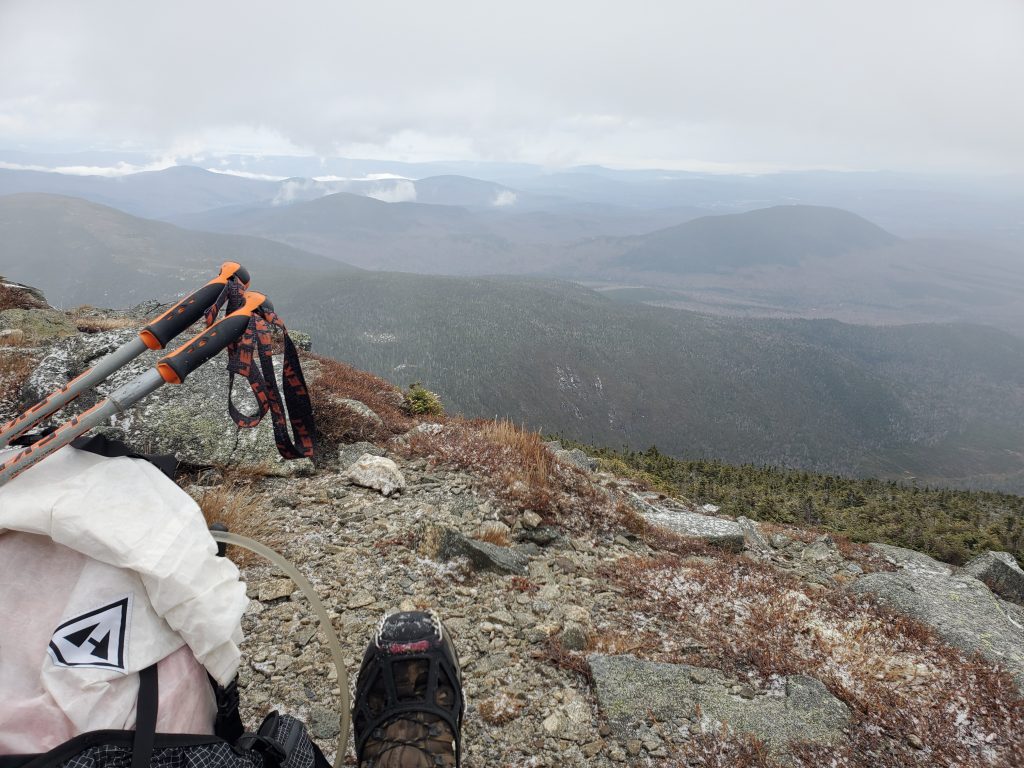
I started my fiftieth year by taking six days and backpacking the 100-mile wilderness on the Appalachian Trail. For the first time since I was married, maybe the first time ever, I was not around friends and family when the year flipped over. Instead, I awoke in a lean-to in the woods and climbed Nesuntabunt Mountain, overlooking Nahmakanta lake, miles from a paved road, trying not to step on the numerous frogs that littered the trail and trying to avoid slipping on the plentiful moose droppings left my seemingly invisible moose. I ended that day swimming in Rainbow lake, hoping for many more journeys in the woods like that one, reinforcing my plan for 180 by 50.
So now, as I prepare for the final seven months of my fiftieth year and approach the actual day on July 23 that I become a half-century old, I am seeking out companionship in this journey of transformation. For while you can celebrate victories alone, the celebration is exponentially better when it can be shared. I am looking for company to join me as I celebrate this 180 by 50 atop the Presidentials in the White Mountains sometime in late July 2021. I hope and pray that by then the worst of this pandemic is past and we can celebrate that as I enter my sixth decade.
The year 2020 will be remembered as the year of the COVID19 Pandemic, and humanity will need to learn from it to become better. We have lost loved ones, people have lost businesses, people have suffered greatly. We can all feel the deep regret that Frodo felt when you told Gandalf that “I wish it need not have happened in my time.” But the words of hope are in Gandalf’s response, “All we have to decide is what to do with the time that is given us.” Through a Mindful Intentionality, we can all take this time as a time to reset, to review, to reflect on what we wish to keep, what we wish to cast aside and what we wish to do better in the coming year. The only one you can truly change is yourself. And do not forget to celebrate!
My Most Important Outdoor Gear
Gear lists are the go-to “drug” for outdoor enthusiasts at home. They are in every medium, in every social media tool, in every sphere of retail. Whether you are just starting hiking or climbing or you are a 40-year veteran continuing to look for that magical piece of gear that will add some measure of comfort to your adventures, there are plenty of ways to get advice. And we eat it up! The subscriptions to the YouTube channels, the Facebook groups, the Instagram Influencer followers all prove that whatever marketing genius started this gear craze, we all have it. I have personally spent hours at a time watching gear reviews on YouTube, pouring over gear reviews in blogs, tracking down details on a piece of gear seen on Instagram. It works! Look at the popularity of stores like REI, Cabelas, and the brand power of Arteryx, Columbia, North Face. We spend thousands of dollars on gear after spending countless hours researching it.
But is that all we need to venture into the wilderness? Sure, many of those gear reviews teach you the knowledge of how to use the gear. I had an outdoor instructor tell us that the key is not just having the gear, but also the knowledge of how to put it to use. He was not wrong. But what if that was not all that was needed?
Proper Gear? Check. Knowledge of how to use it? Check. That might keep you alive, but will you enjoy that adventure?
Now I am not a long-distance hiker, or some gear expert. I am largely a wanna-be thru-hiker, weekend warrior, occasional section hiker. This summer, since COVID19 ensured that an out-of-state vacation would be difficult, I decided that 6 days on the Appalachian Trail was just what the doctor ordered, and man, was he right! I came off the trail refreshed and wanting to keep on walking (which is why I put Katahdin at the end, so I would not get to the trailhead and keep on going), but some of the people I encountered started me thinking about that something extra that maybe they needed to bring with them.
Of course, COVID19 has messed up many thru-hiker plans. The ATC asked the thru-hikers to leave the trail when the COVID19 restrictions we put in place, largely to limit the impact on small-town EMT that could be involved in any rescue. Most hikers left the trail, some kept on going. When the restrictions began to be eased, many people started thinking about taking a south-bound hike or doing a flip-flop hike (south from Katahdin for some span of miles then flip to Springer Mountain and head north to where they stopped southbound).
As I spoke to mostly south-bound through hikers (“Sobos”), I discovered a wide variety in plans. One young woman had finished her post-doc and had a year between school and starting her new guaranteed job. She was supposed to go to Europe, but with that not available, she figured she should through hike the AT, southbound. She had never been backpacking before and just 25 miles in was debating whether to continue, not sure if backpacking was her thing. I encouraged her to seek out “her thing,” and it did not have to be a thru-hike if she did not want that. Did she have all the “gear” she needed?
Another Sobo was a man who worked coordinating technology conventions, out of work until 2021 with a wife so involved in politics that “she will barely notice I am gone,” he said. He had never backpacked before, but he did train a bit. He seemed eager for the adventure and the challenge of a thru-hike. And there were others. All these people started their trip climbing Katahdin (one of the hardest climbs on the AT) and then walking through the 100-mile wilderness with enough food to carry them 100 miles to resupply. The overarching theme seemed to be, “I can stay at home and wait out COVID or I can through hike the AT.” Why not?
I came upon a young man from Georgia just north of Nesuntabunt Mountain favoring an injured knee who told me about magically finding a trekking pole on the trail which helped him walk. He was trying to decide whether he should climb a small mountain for cell service to call for extraction or walk to a local hiking camp for help and was paralyzed on that bridge with indecision. He had a working cell phone with an app with maps, a new pack, and that magical pole. Surely, a call for rescue is always a hard call to make, but did he have all the “gear” he needed?
Everyone, including myself, comes to the wilderness with some sort of goal. It does not have to be “hike 2,190 miles to Georgia.” It could be hike X miles in Y days. Climb to the top of some mountain. See some remote site that you have heard about. Those are all laudable goals, but they are not THE objective. The primary objective? Return to the trailhead safely, and, as much as possible, enjoy the trip. Safe return and enjoyment, hopefully with some goal accomplished.
To have both that safe return and enjoyment, and in most cases, achieve your goals, you must bring more than the right gear and knowledge to the trip (though they are required). I am coming to believe that the most important gear you can bring to the wilderness on any adventure, be it hiking, backpacking, climbing, whatever, is a PROPER ATTITUDE.
What do I mean by proper attitude?
It begins with an acknowledgement that no matter what gear you have, no matter what experience and knowledge you have, you are not in control here. Your enjoyment and your safety will have everything to do with how you respond to the events that transpire during your journey.
So, the first aspect of a proper attitude to bring any hike is humility. Nature has a way of impressing its will upon you and while that may present a challenge to be overcome through perseverance or skill, there will come a time when you need to know where the edge is, where you must adjust your plans or expectations. An attitude of humility rather than one of a “conqueror of nature” will equip you better to have the other aspects of the proper attitude. That humility will also prepare you to learn something about yourself, the terrain, your skill or your gear as part of your hiking experience. There are few better teachers than wilderness experiences, presuming you can survive them!
I like to say I have climbed Katahdin 10 times, but have only summited 6 times because those other times I accepted that “today was not a summit day” and turned around in the face of what would have been dangerous to continue. And that attitude made those times when I did reach the summit that more precious. I learned as much from the times I ‘failed’ to summit as I did from when I did summit, perhaps more. The failures even often make better stories, “The rain literally washed us down the mountain on the Helon Taylor trail… then the sun came out and Pamola smiled at us.” Remember, the mountain is in control and heeds you not, you are a guest amongst the trees and the rocks that have stood there long before you came and will stand there long after your footprints are washed away by the rain.
The second aspect of the proper attitude to bring is to seek delight in all things, and I do mean all things. Some people use the phrase “embrace the suck” as a term to find joy even in those parts of the hike that are most difficult, but even that has far too negative a connotation.
This summer on the Debsconeag Backcountry trail my wife, Diane, and I had just packed away the tent and began to hike as the rain started to fall on us. The day before had been oppressively hot and buggy, that morning the rain seemed to make everything greener! The rivulets of water highlighted the trail and seemed to make us laugh at the playfulness of stomping through the puddles. Over the next 7 miles and 4 hours, our clothes wet through and our boots filled up with water (we forgot our gaiters) to the point where they were squishy every step, but we were laughing and thoroughly enjoying walking through the woods in the rain. It has a totally different character in the rain, and no bugs!
Even thinking about how that moment may “suck” can prevent you from being fully present in that moment as you try to “power through” the discomfort. Instead seek out the joy of that moment, even if it is uncomfortable to you at first. My wife said she would have never known how much fun it is to hike in the rain had she not gotten caught out in it and just decided to be fully present in that moment. Leave the complaining about the circumstance behind and see the enjoyment that can be found in that moment, a moment only you and your immediate surroundings truly share. Don’t miss it!
The third aspect of a proper attitude is that Leave No Trace (LNT)is not just a set of rules, it is a life principle. There is a whole movement around Leave No Trace to teach people respect for the natural environment and to leave it better than you found it. It can be phrased as “Take only pictures/memories, leave only footprints” or “pack in / pack out.” However, it should be noted that whatever list of rules or slogans are used to express the principle, Leave No Trace is a life principle of respect for the environment and a call to treat it well.
This is important – it is just not about the rules. You can log onto any social media group about hiking and ask if people should leave a colored rock on a hiking trail and stand back and see the flames rise up as people argue about the rules of what should be left in the wilderness. It is a passionate debate about how to apply the LNT principles with good intentions on both sides, but sometimes those principles are sacrificed in a fury to follow and enforce the rules.
What I find most useful about LNT is that applying the principle of leave no trace engenders an attitude of respect towards one’s surroundings. Nature is not just there for me to consume like I consume a hamburger or some movie on Netflix. Nature is a living, breathing thing deserving of respect and dignity and an attitude of gratitude towards what it gives us by being in it.
This attitude of respect gets expressed in not only packing out the trash that one took into the woods, but perhaps carrying some extra out. It may include respectfully teaching others how to better treat the wilderness or learning more about how to better conserve and protect the wilderness resources. Ultimately the principles of LNT and the attitude it engenders can lead to a gentler approach to ourselves, the world around us and others that respects the space and place of all beings around us, gratefully accepting what they bring to us, and treating them with dignity in response. A life principle indeed!
The fourth aspect of a proper attitude that you should bring to your adventure in the wilderness, after humility, seeking delight and LNT as a life principle is adaptability. You should be prepared to constantly revise your plans, improvise new methods to do something, to change plans in the face of weather, busy trailheads or some other unpredictable circumstance. Put another way you must “adapt, improvise, survive.”
The first time my wife and I summited Katahdin she banged her knee on the way up the saddle rockslide. I wrapped it in an Ace bandage, but the clips were missing, so I wrapped that bandage with duct tape, and it stayed on until we got back to the trailhead. In the 100-mile wilderness where the fuel canister I thought was full ran out during breakfast on the first full day, I just cut out my evening tea to make the only other canister I had last. When it is hot out, you take longer breaks and camel-up at water sources to ensure that you are not dehydrated by hiking in such weather. At other times, just getting your tent dried out during a sunny lunch stop can seem like a victory of adaptation. You never know what you are capable of until you are called to improvise in the wilderness. Queue the Apollo 13 scene, “don’t give me anything they don’t have in their backpack…” Your ability to adapt to new circumstances, define a small new victory and adjust your plans in the face of unpredictability aid tremendously in finding delight in all circumstances.
Finally, the fifth aspect of that proper attitude is to know you always have three choices. These words are legendary in my family ever since I first spoke them to my wife after a scare during her first backpacking trip. I meant them flippantly, but she did not speak to me for miles (rightly so). Eventually, the phrase became a funny story and even a life principle for me. In any given moment, you have three choices, you can: 1) go back, 2) go forward, or 3) stay in place (and die?). (Obviously, the last one was a little over-dramatic at the time!)
The principle simply means that at any point you should be prepared to choose one of the three choices. You should always be prepared to go back—sometimes that IS the right answer when faced with certain dangers. One day while hiking a new (to us) trail in the Whites, we discovered, we had not brought a map, had forgotten the first aid kit and we had not told anyone where we were. Three strikes! So, we turned back and stayed safe. When 60 mile-per-hour wind gusts and rain are expected on the tableland, Chimney Pond may be as high as you get to climb that day.
You can always (and perhaps usually should) go forward to your destination. Perhaps the question is more about learning perseverance than avoiding danger, then continue and find that “fifth wind!” Define your own timetable and see what is around that next bend, after that next river crossing, over that next summit.
Then there are times to stay put and wait out weather or rest up or recover from an injury. This could be minutes waiting out a storm or days resting a sprain. The urge to keep moving can be misleading, when sometimes taking a moment to chill in place while the world moves on around you can be as enjoyable as climbing that next hill. (See also seek enjoyment in all things)
You should have criteria defined ahead of time that would help you decide which way to proceed in any given scenario. A good example is to plan a turn-around time when trying to summit a mountain. For example, you may plan to turn around and go back if you have not summitted by 1PM, because there may be thunderstorms in mid-afternoon. Plan for taking an extra day if heavy rain causes you to wait out the rain. Planning those types of decisions ahead will prevent you from having to make fatigue-influenced decisions in the moment (which are rarely best).
So then in addition to the proper gear, and the knowledge of how to use it, add the proper attitude to the things you should take on your hike. This proper attitude of humility, seeking delight, LNT as a life principle, adaptability and knowing you always have three choices also meets another hiker requirement—it has multiple uses! Not only will it provide you a better mental framework to enjoy your hike, it will actually increase the likelihood of you reaching both your objective and your goals while enabling you to learn more about yourself and the world around you. And, for all you ultra-lighters out there, it will not add to your base weight!
Enjoy your hike!
(Thanks to the Maine Hiking Facebook group for their answers about hiking attitude that contributed to the development of this essay.)
My North Woods Ramble
Unlike many people who had to change their vacation plans when COVID19 hit and changed everything, I was already planning to be social distancing and off the grid in the North Woods this summer. The entire 100-mile wilderness was the original plan, but COVID19 curtailed even some of my training and I figured a scaled back version was in order, allowing some time for my wife and I to play around Baxter State Park. She has informed me that backpacking is not her thing but I am more than welcome to it myself. So the plan became 50 miles on the AT, five days in Baxter State Park Day hiking Hamlin Peak and North Brother with a possible additional 2 days and the Traveler loop as my “stretch goal.”
I was entirely unprepared for that both the preparation and anticipation and for the level of chill that that this plan would grant me, but I had so much fun I figured a trip report was in order.
- July 17-19 – Shake-out Trip on Debsconeag Wilderness Loop Trail
- July 21-26 – Solo Backpacking on the AT
- July 26-31 – Lean-To at Katahdin Stream and Day Hiking Baxter State Park
The Shake-out: Debsconeag Wilderness Trail
The troubles began with the weather. The shake-out trip planned for July 11-12 in the Nahamakanta Public Lands on the Debsconeag Wilderness Loop had to be postponed due to a tropical storm. (Good choice — the area was soaked that weekend!) I had not been backpacking in well over a year, so some shakeout was needed before a 6-day trek. So the shake-out was planned for July 18-19, with only a day and 2 night in between to make adjustments!
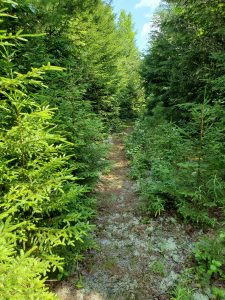
Diane figured she would come with me to keep me company, and get some time in the woods herself! The Debsconeag trip was a nice walk through the woods, with heat and humidity the first day, and rain the next. It was only on our return to the trail head that we realized we had all the elevation in the first hours of our humid adjustment to backpacking again, but the evening on Nahamakanta lake made it worth it all!
On Friday we drove up and stayed at Jo Mary Lake Campground so that we would not have to drive the 4 hours up from southern Maine before we began hiking. On Saturday we drove by Nahamakanta Lake Road a ways before realizing it. There is no sign, so pay attention to the mileage! The trail head had one other car at it, but we never saw the occupant. The we walked the loop so that we would end up at the north-western end of Nahamakanta Lake, walking an old logging trail for some way and passing by a number of pretty ponds.
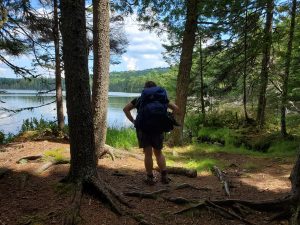
We camped for the night on the sand bar, swam in the water to wash off the sweat and humidity and enjoyed watching dozens of dragonflies feast on the bugs as the sun set behind the mountains.
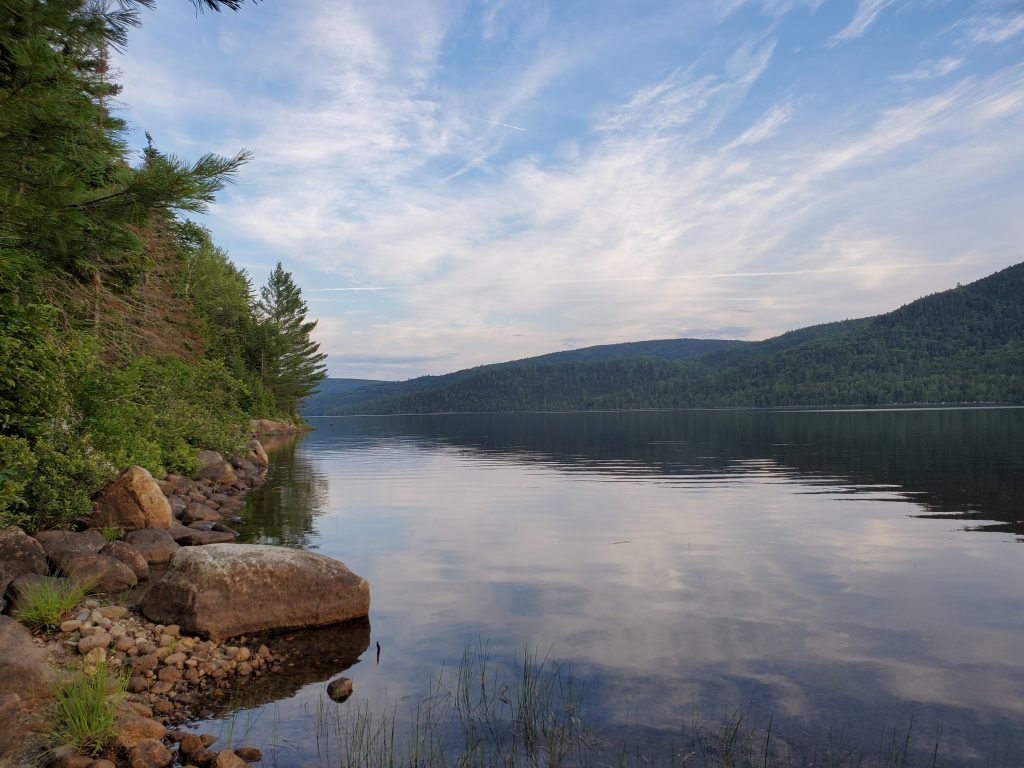
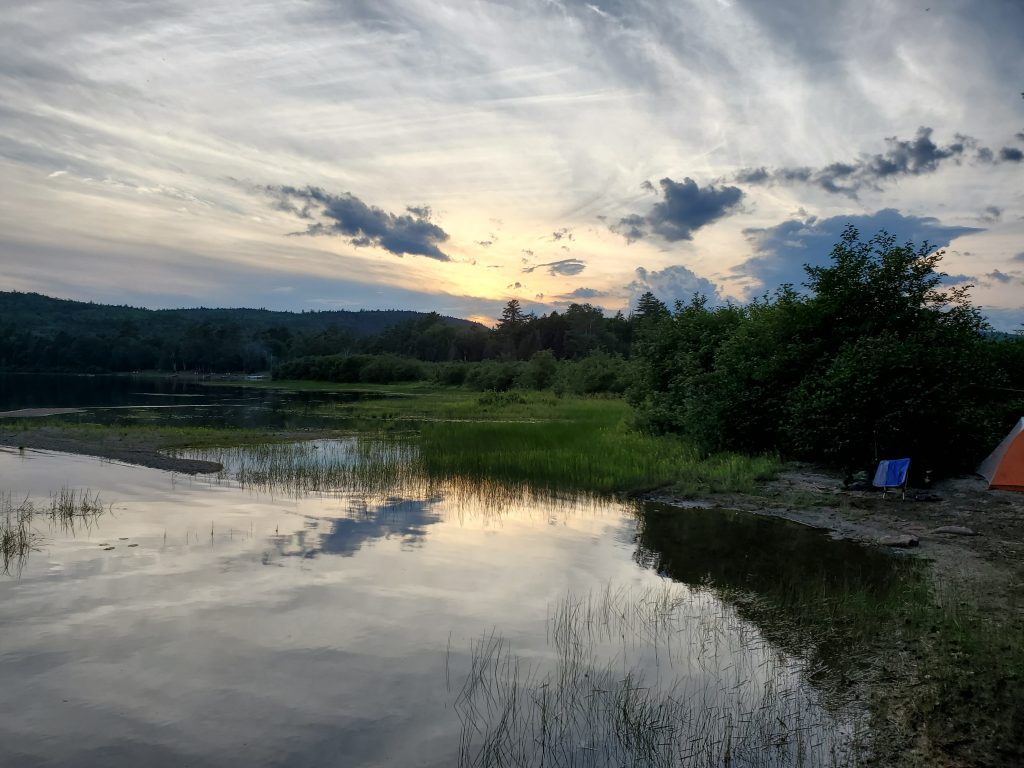
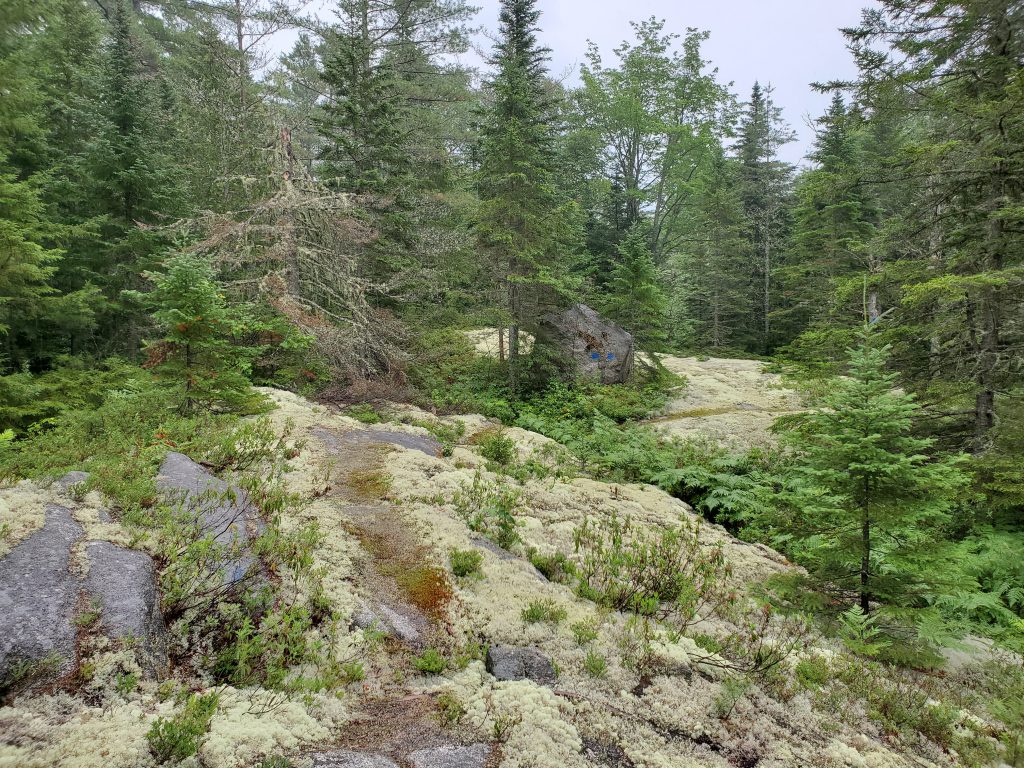
The next day started well and we were expecting more heat and humidity, but mercurial Maine Weather gave us rain instead, just as we got packed up and ready to go. The result? WE did not overheat, but we did end up with wet feet, as we forgot to wear our gaiters and walking a close trail in the rain without gaiters will get your feet wet! The day was more downhill than the previous day and was much prettier scenery. We got to the trail head and back to our truck at noon, just as the sun came out and started overheating everything! Thanks be to the rain!
On the way out to the main road, we TWICE had to stop to allow a ruffled grouse mother to guide he chicks across the road. Never had that happen to me before. The second time it was close to 5 minutes as we waited for the reluctant chick to be coaxed across the road. Why did the grouse cross the road?
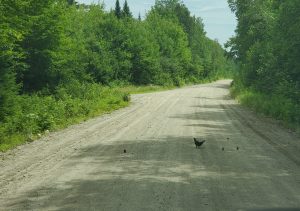
So, the results of the shake-out? Wet boots, take and wear your gaiters when it rains. Humid? Drink lots of water! Eat at least every 3 hours. The Helix Zero Chair does not work well in sand, don’t bother bringing it.
But as with all great adventures the problems start early. First, I could not get my boots to dry out, then I discovered the sole was coming off! Time to retire my Asolos, but no time to break in a new pair! I had been researching new boots and was looking for something less bulky, so I ended up running down the to Eastern Mountain Sports the night before and purchasing a pair of Salomon Quest 4D 3 GTX boots, hoping they would not need to be broken in, and held a retirement party for my old pair.
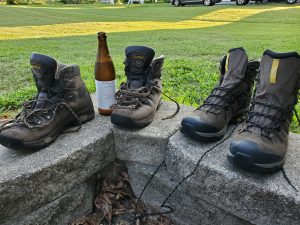
The 100-Mile Wilderness
Then the day of departure for the 100-mile wilderness arrives and put my pack together and weigh it – way too heavy! y food bag alone for 6 days was 10 lbs! So I quickly started throwing out the deserts and the luxury items, paring down to the smaller tent and fewer clothes items to get to what I felt was a more manageable weight. (I still need to work on denser, more calorie rich food to take.) That whole scramble delayed our departure, but in the end probably saved me more sweat and pain than I could imagine. I shaved off 5 pounds in a flurry of activity!
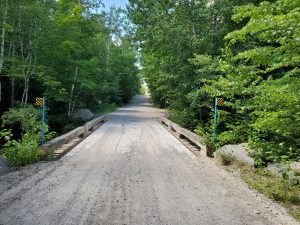
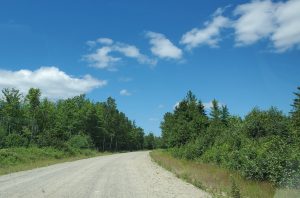
Diane and Drake drove me all the way up to where the Appalachian Trail crosses the Jo Mary Road and dropped me off for my great adventure. I watched them drive off, sighed a deep lonely sigh and dove into the woods.
That first day I was planning on stopping at Antlers, about 4.3 miles in, but while the campsite looked inviting, there was already people there and I wanted some solitude. So I kept on hiking until I got to sand beach on the other side of Lower Jo Mary Lake at about 6 miles. I sat up camp there and made a lounge chair out of granite boulders and waited for the stars to come out. I was not disappointed.
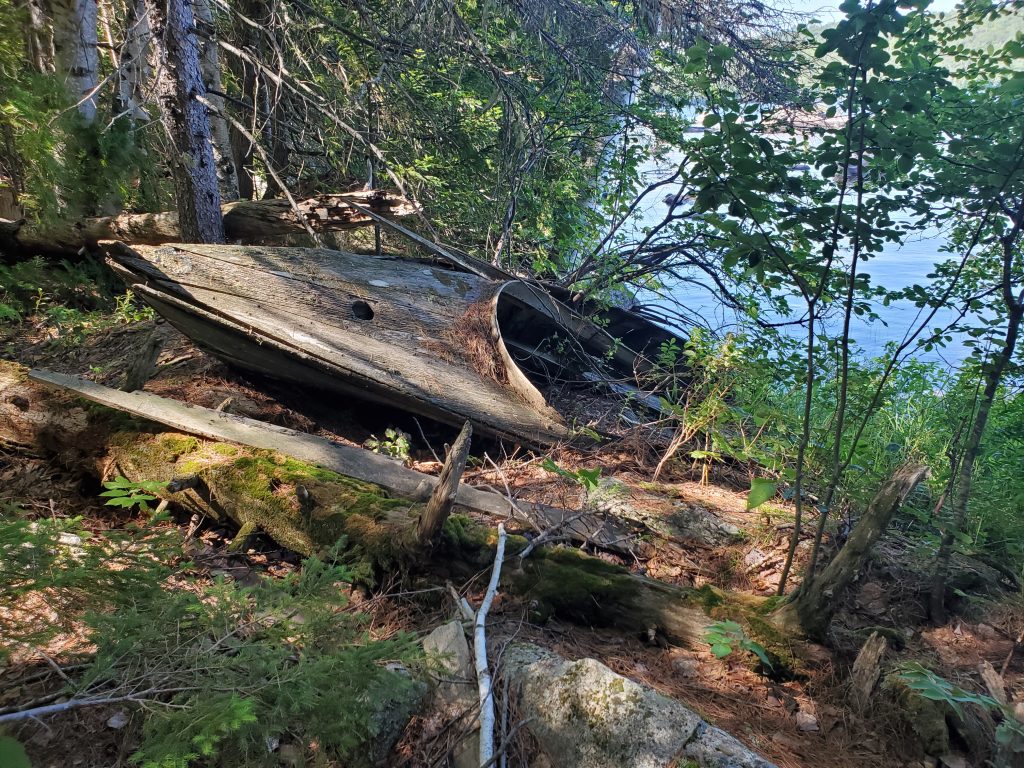
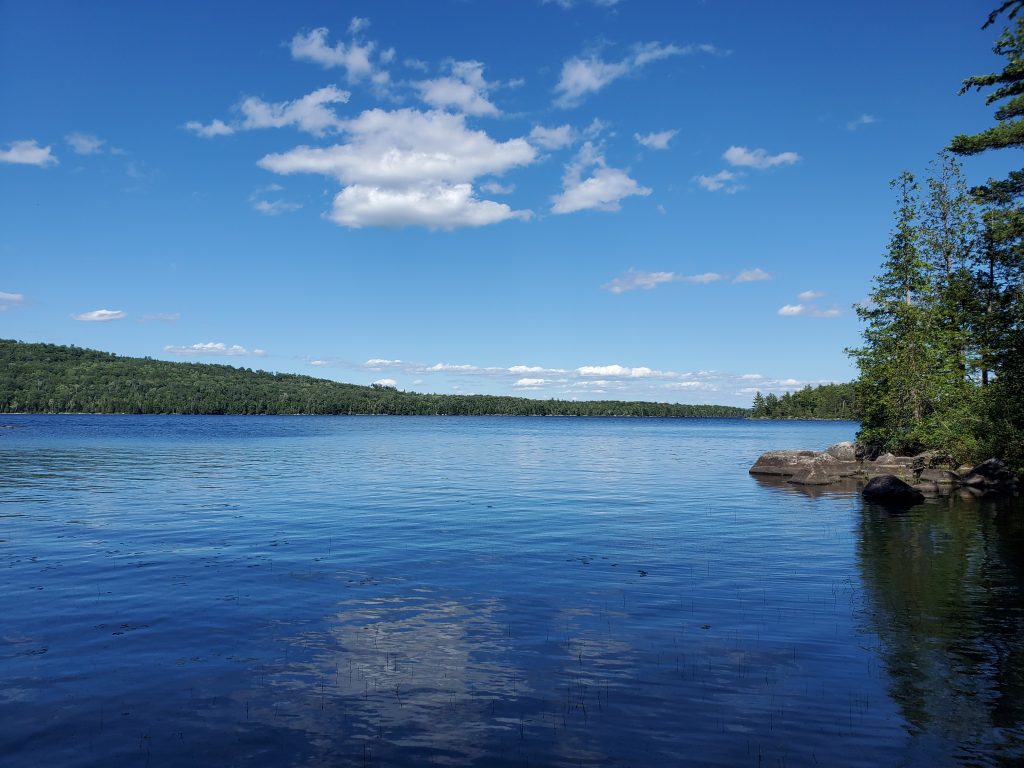
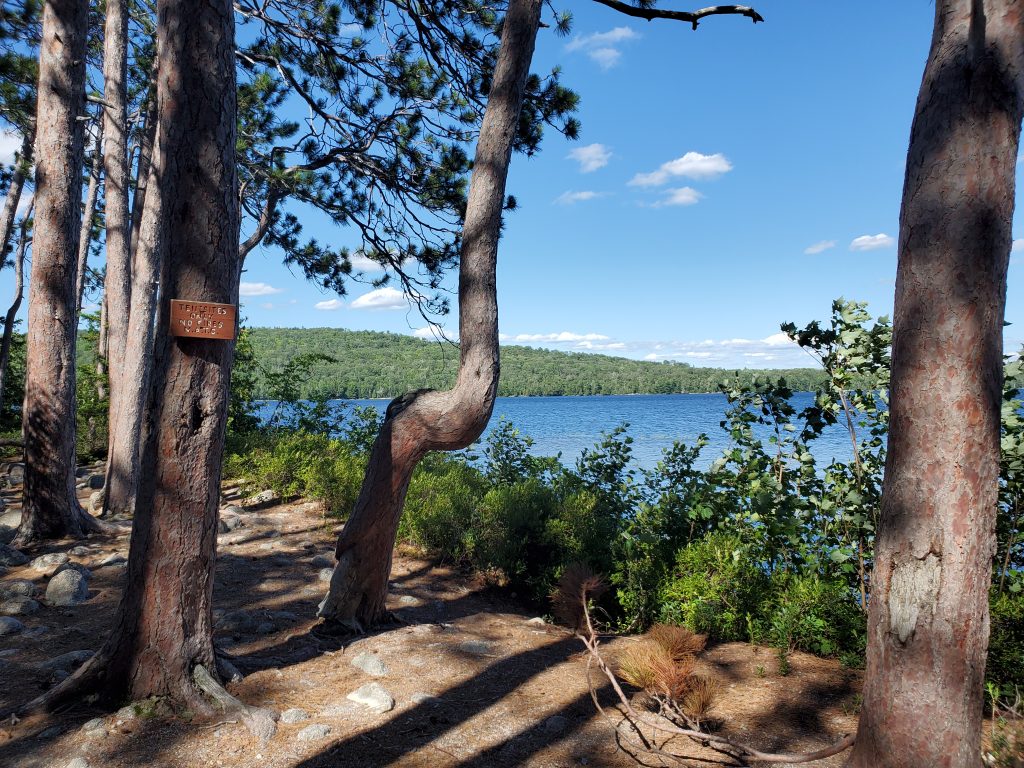
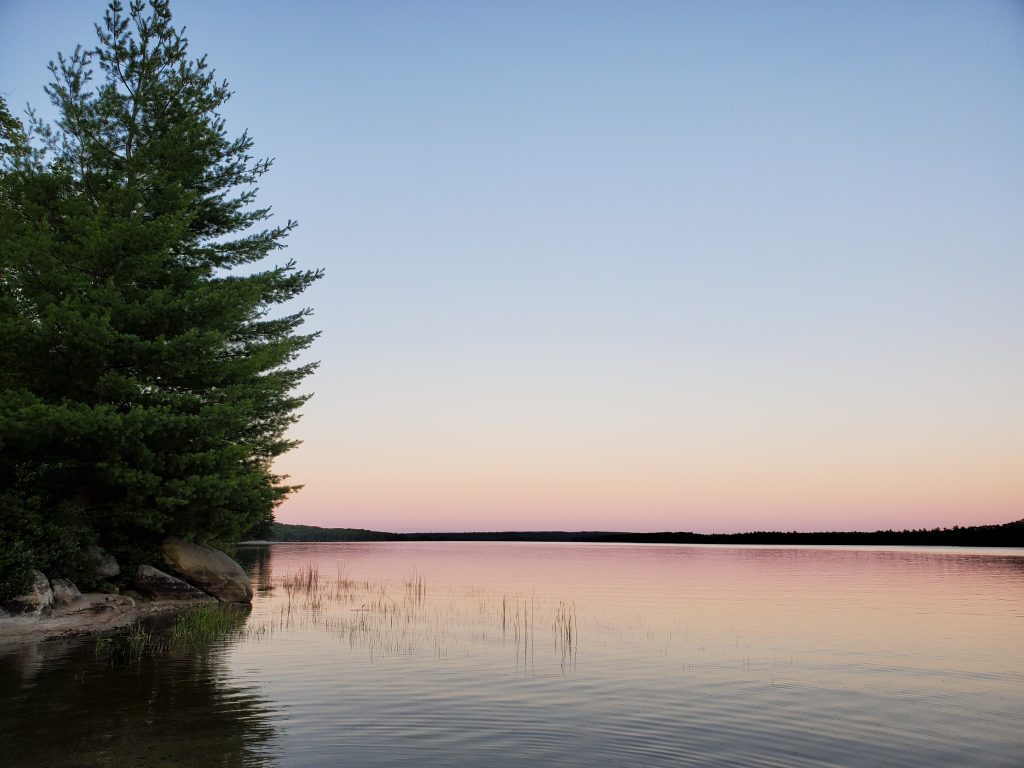
The next day (day 2) I hiked all the way to Nahamakanta lake and almost camped again on the shore, but the weather report predicted heavy rain that night, so I figured a Lean-To would be better, and so headed up to Wadleigh Stream Lean-To at 12 miles for the day. This is when I started to actually run in to people that wanted to talk. I slept like a baby that night in the lean-to, and it did not rain of course.
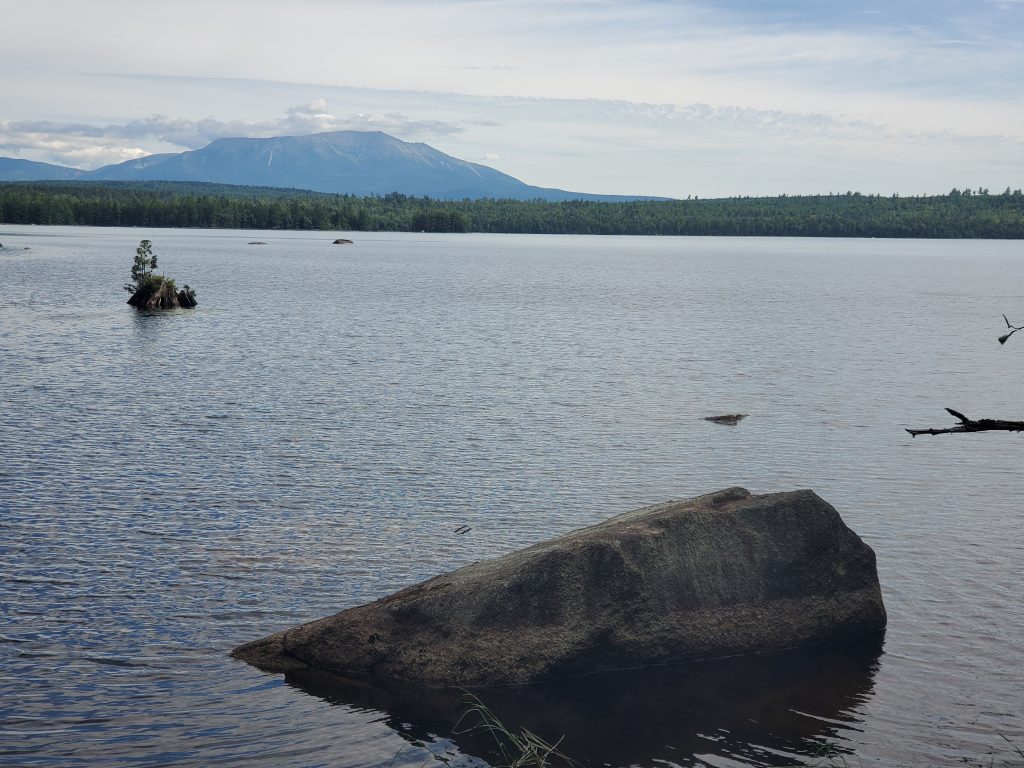
Day 3 was my birthday! I got to hike as far as I wanted, at my own pace on a beautiful day in the Maine Woods. What more could I ask for? I started the day with a climb up Nesuntabunt Mountain (1500 feet), from the top of which I had cell phone reception to call home and post an Instagram Mountain selfie (LOL!). By this point I am realizing that I was going to need to ensure my water intake was significantly more than I thought it should be. From that point on, at every stop I chugged somewhere between a half to a full liter of water, just to ensure I did not get dehydrated, and it definitely helped my energy levels. That day for lunch I had my Salame Caprese and Asiago Cheese in Olive Oil and Rosemary on a Tortilla beside a rushing brook – few meals are better than that! And the concentrated energy in that meal helped me get to Rainbow Spring Campsite, completing 12 miles for the day, not including the half-mile to visit the Rainbow Lake Dam.
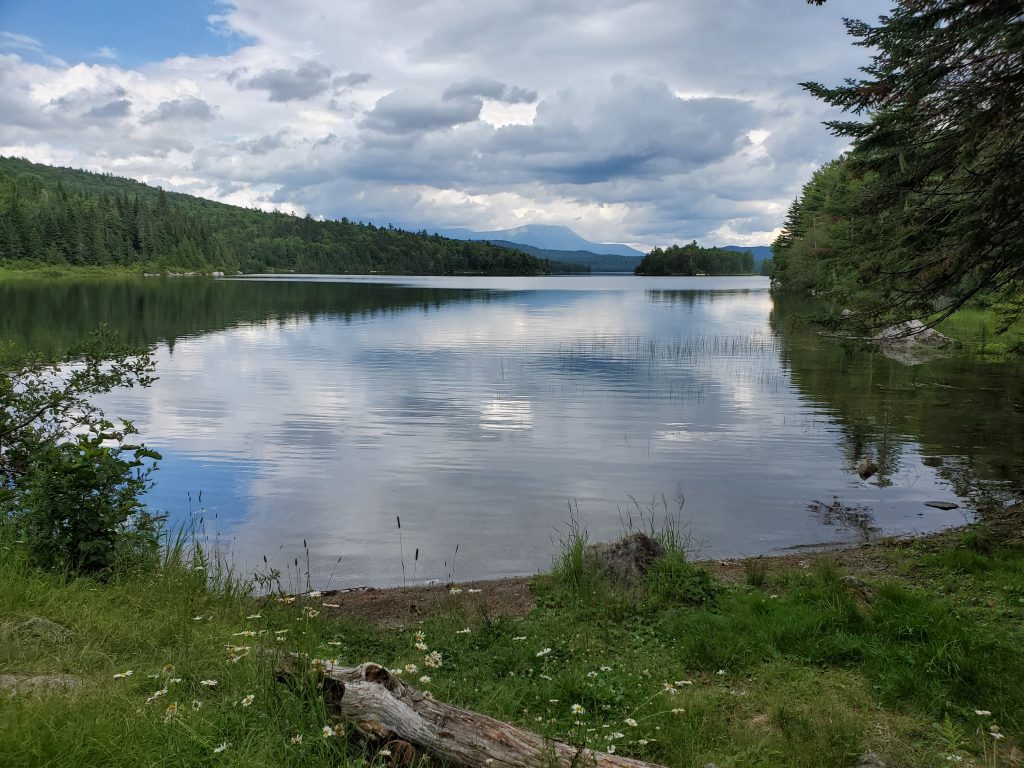
The next day, day 4, I had time to waste, since I could have probably hiked out to Abol Bridge from there, but I wanted to spend another day on the trail. So I took the time to hike up Rainbow mountain and still got over the Rainbow Ledges and to Hurd Brook Lean-To by 3PM. The trip up Rainbow Mountain (1644 ft) was well worth the climb for the views. All together it was 7.7 miles of full pack and 1.5 miles to visit Rainbow Mountain.
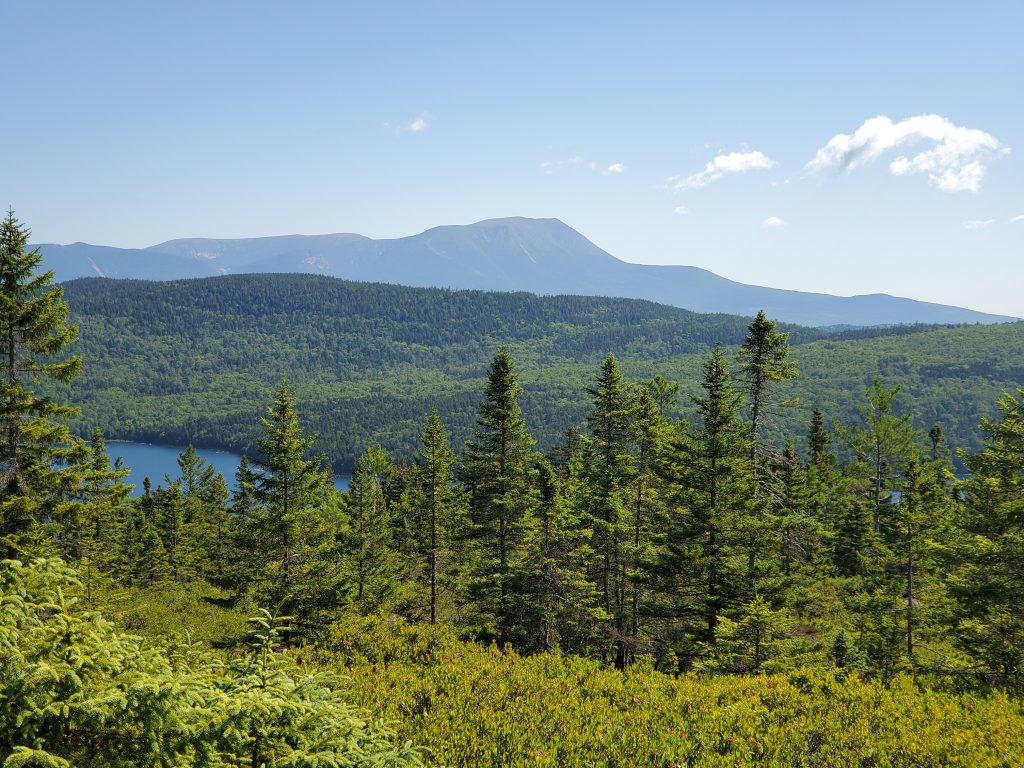
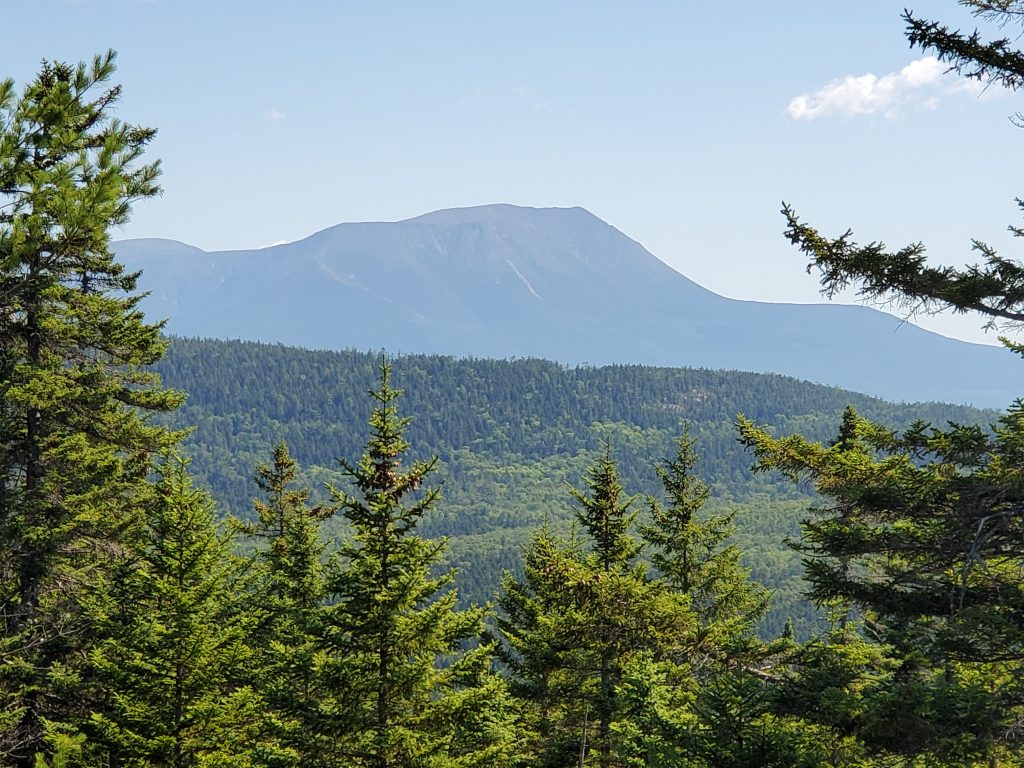
I stopped for lunch at the Northern end of Rainbow lake and must have been salty, because I became a resting place for dragonflies and butterflies as I nibbled my lunch. Next I climbed over Rainbow Ledges and wished that I was a week or tow later, as the blueberries are not yet ripe enough, save a few.
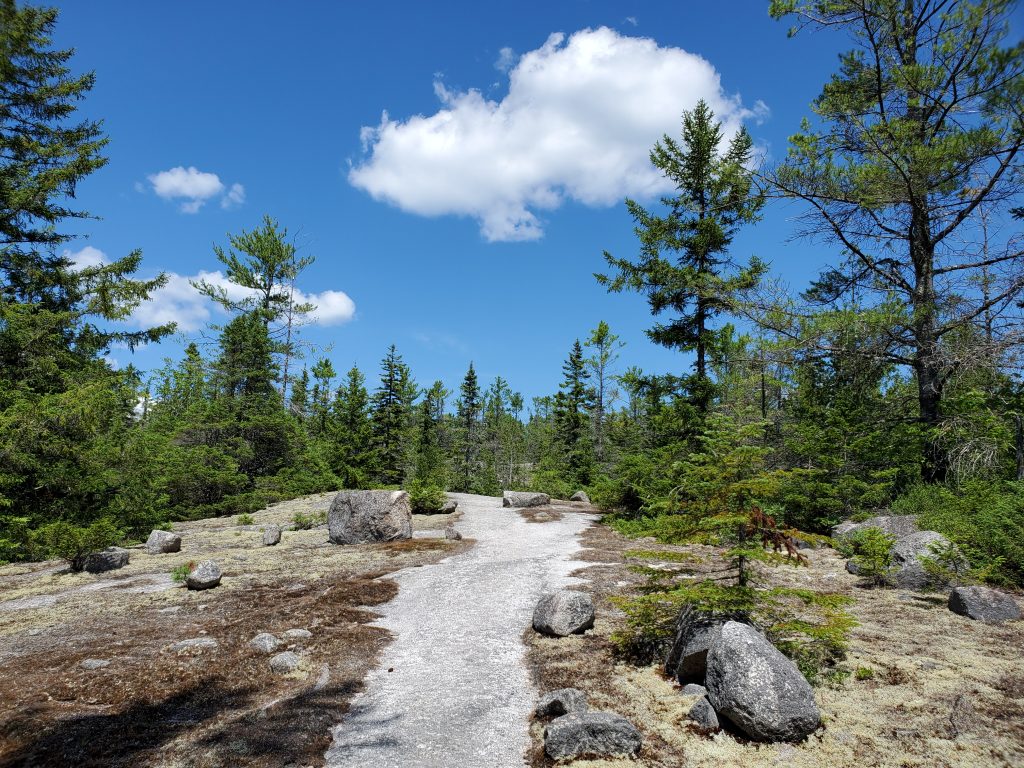
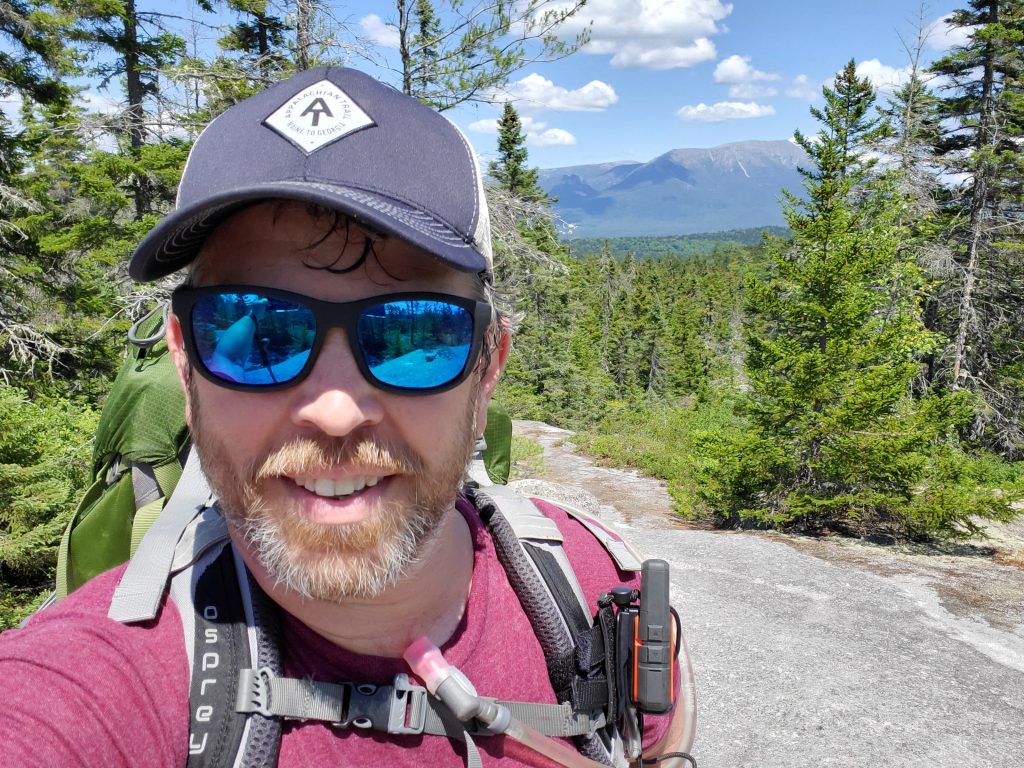
So I arrived early and napped at Hurd Lean-To, having only 3.5 miles left to get to Abol Bridge and back to some semblance of Civilization. I was not ready for it yet. Instead, I napped and read some The World Ending Fire: Essential Wendell Berry on my phone. If you are looking to connect with a place on a deep intimate level, backpacking and Wendell Berry go well together, like a fine wine and an aged cheese. WHile i do not want much technology besides my Garmin InReach Mini with me, having Kindle on my phone is a luxury helps drive equip me with thoughts for reflection as I hike or even as I nap.
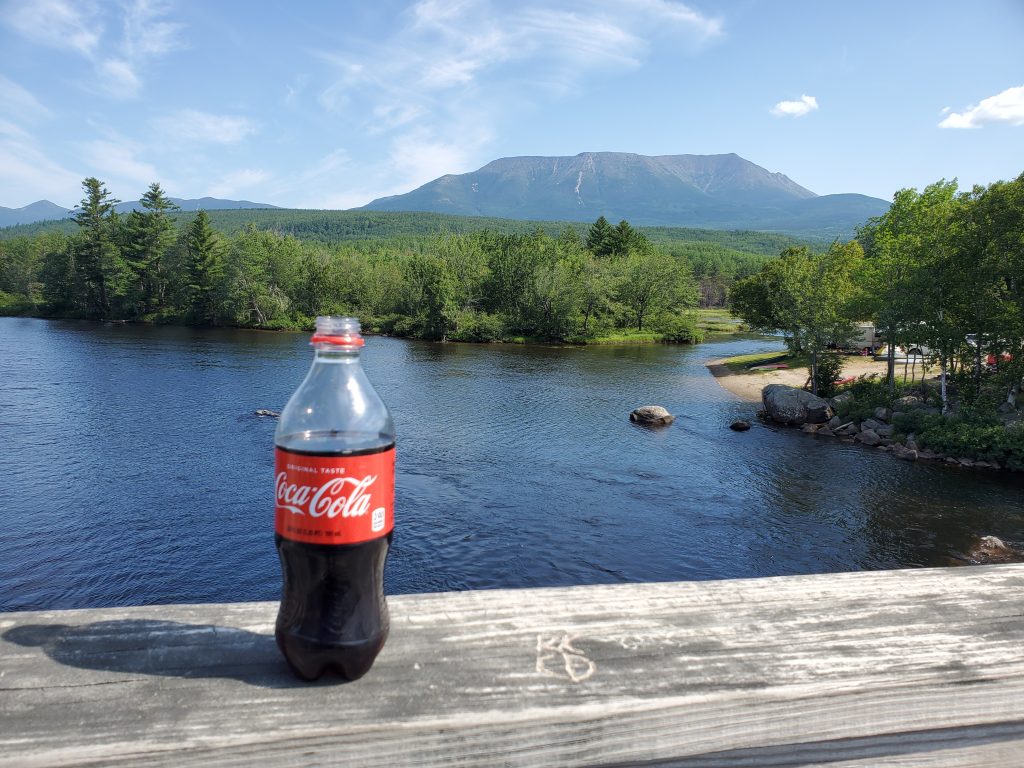
Day 5 was only 3.5 miles to Abol Campground, the only private campground on the entire Appalachian Trail. I arrived there at 9:30 and grabbed a coke to enjoy. They had a tent site available, but I could not get into it until 11 AM, since that was “check-out” time. So I took my Coke, went back across the bridge and found a spot down by the river to nap. (I found that my napping capacity was greatly enhanced during this trip.) I awoke at precisely 11 AM and walked back to get my tent site, settling in to have my lunch, a six-pack of beer and a shower. Unfortunately, neither the beer nor the shower were all I had hoped for, but they sufficed. Then, I napped the afternoon away! (What else?)
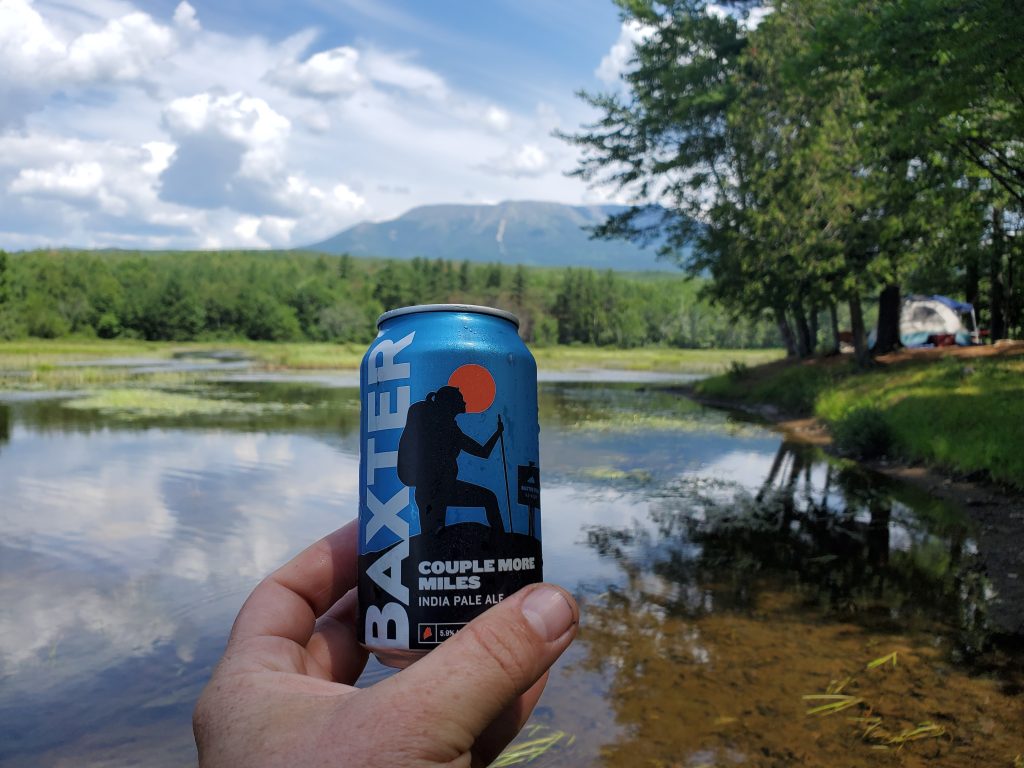

It is never fun breaking camp in the rain, but at least this was the last day I would need my tent. I figured I had 10 miles to hike that day and expected Diane to meet me at our reserved Lean-To at Katahdin Stream around 3 PM, so I had plenty of time. I could have shorted the trail by going up the Blueberry Ledges Trail but that would skip a bunch of the official Appalachian Trail, so I stayed on the longer version following the Penobscot up the Nesowadnehunk Stream and past Daicey pond to Katahdin Stream. That last stretch between Daicey Pond and Katahdin Stream campground is some of the most beautiful trail I have ever hiked, and my pictures cannot do it justice.
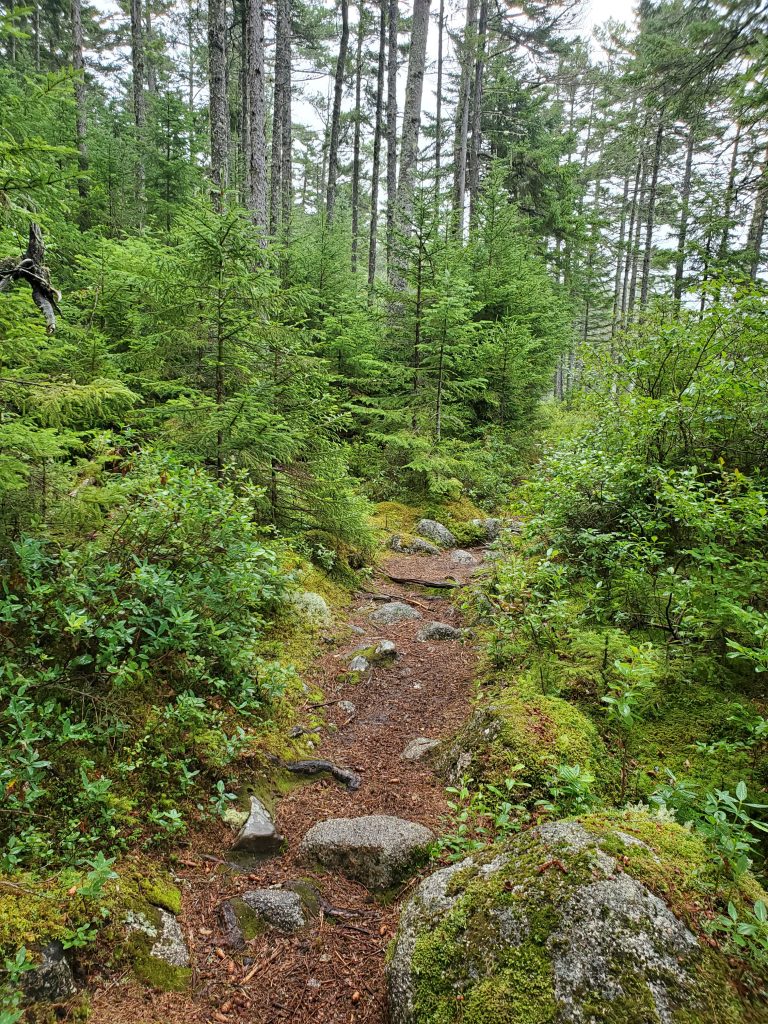
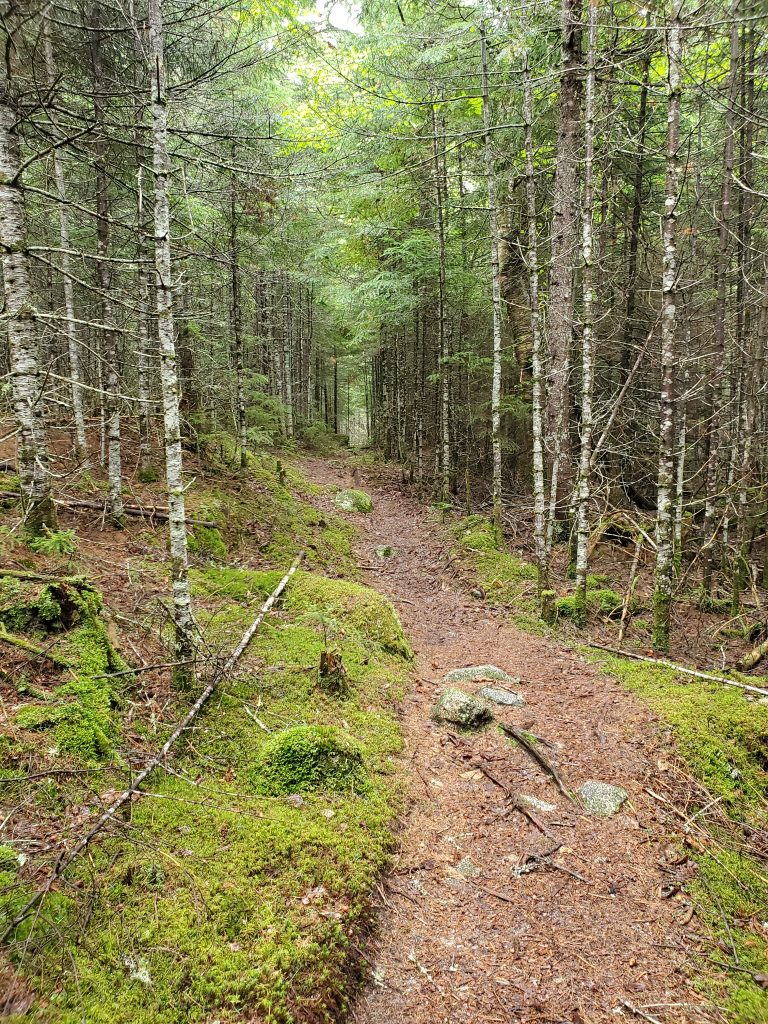
I made it to my lean-to at Katahdin Stream and checked in shortly after noon. It turns out that my maps were out of date and the trail had been re-routed, removing about a mile, so I got 9 miles done, rather than 9.9. I began to dry out and heated some Lipton Cup-a-Soup and then napped until Diane arrived later. She remarked that she had never (in almost 22 years of marriage) seen me so “chill.” I guess that is what the woods does to you, maybe that’s the Tree-breath exchange.
Baxter Park Exploration
But we were not done, we had FIVE nights at Katahdin Stream in that Lean-To, and there was a park to explore! Monday was a zero day where we drove out the Golden Road to Chesuncook, a village that was there when Thoreau visited the area. The views were beautiful and the road was better than I had thgouht, at least where it as dirt.
Tuesday was our day to hike North Brother Mountain, a 4,000 foot peak with Diane and my Cousin, Hollie. Hollie arrived to pick us up and head to the little-used trail head. It should be more used, it was an amazing hike, with sections that rivaled the Daicey Pond to Katahdin Stream AT section I had hiked on Sunday. We took the Martson Trail out and back which would total 8.6 miles out and back with an elevation gain of 3,618 feet.
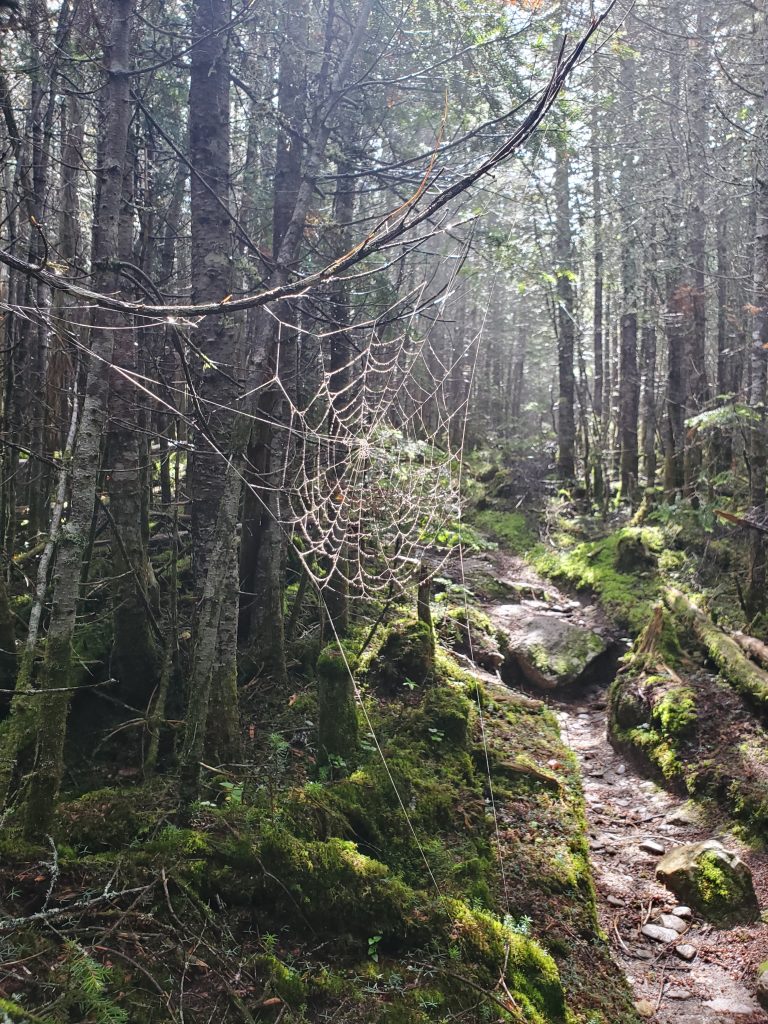
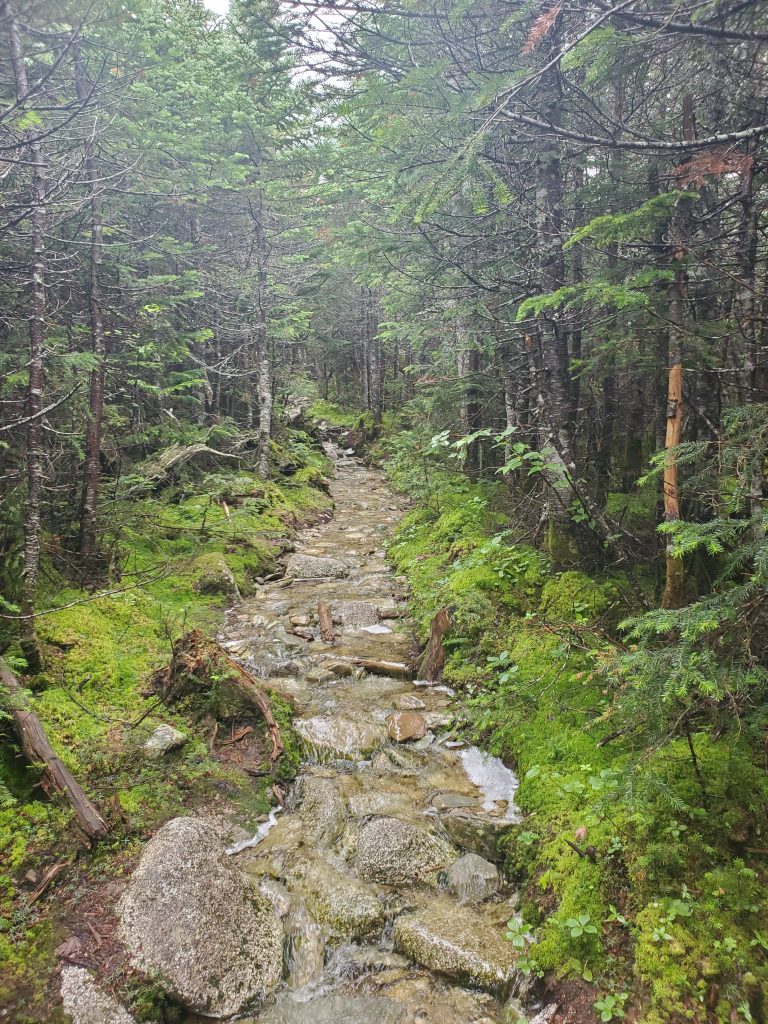
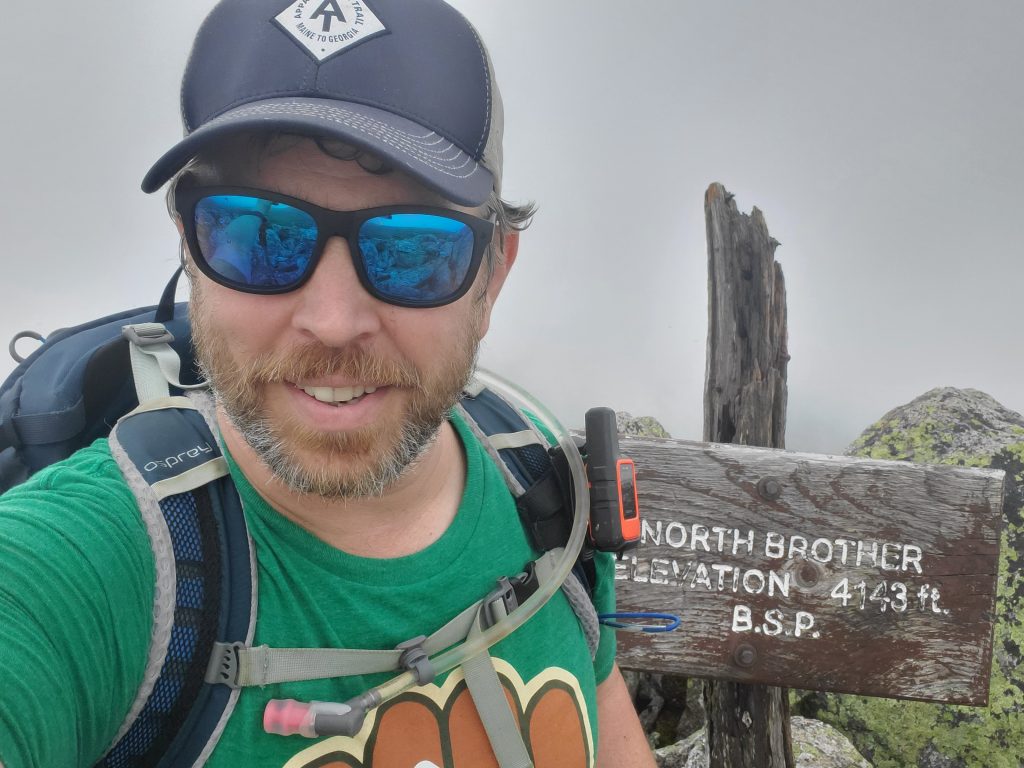
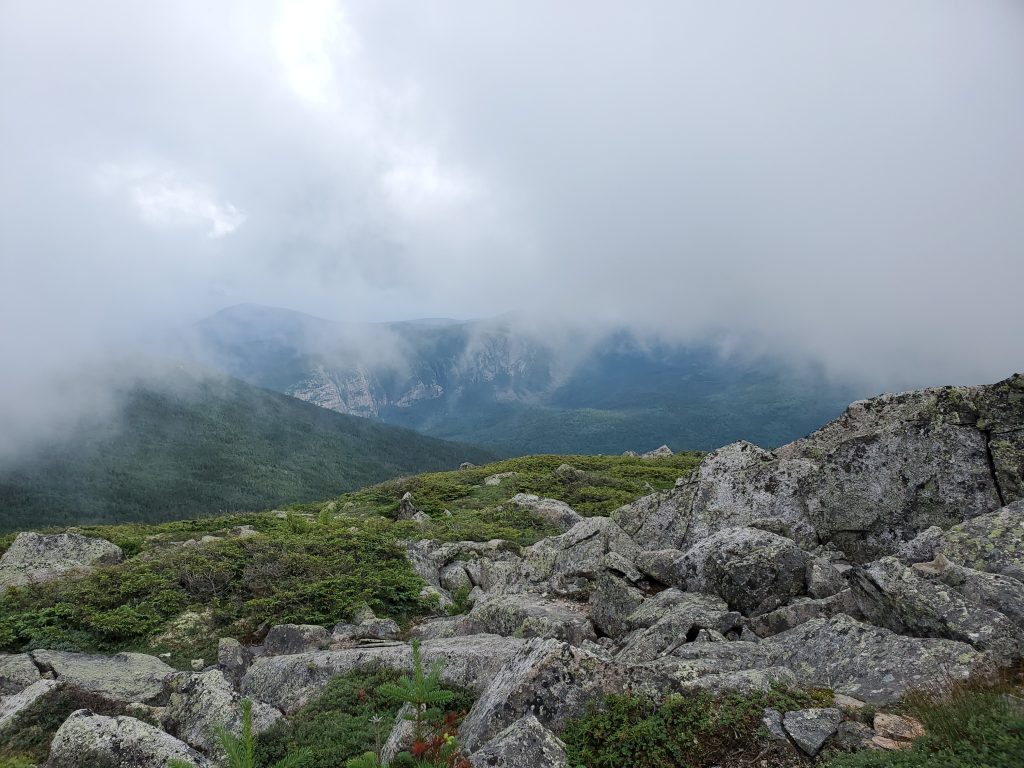
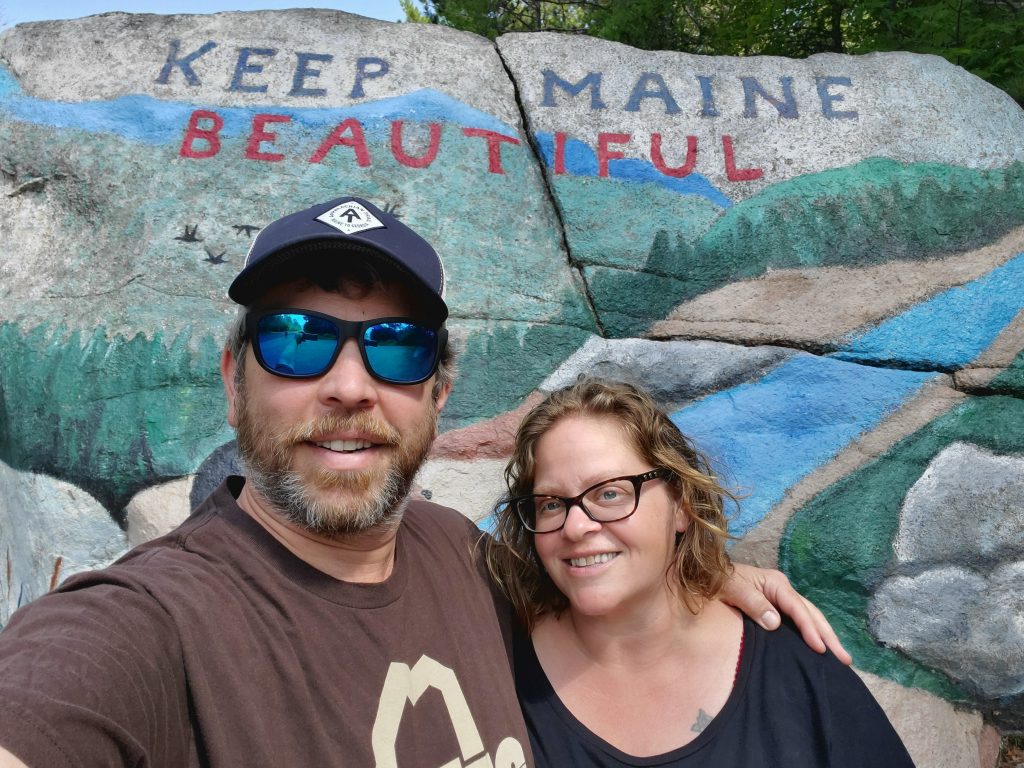
So, one more hike. Diane wanted her own alone time and I wanted to bag Hamlin peak (4,756 feet), so on Thursday, Day 10, I scooted over to Roaring Brook Day Use area and took Chimney Pond Trail Up to the Saddle and came down Hamlin Ridge Trail, taking the cut-off to get back to the Chimney Pond trail and down for a total of 10.3 miles and 3,267 feet of elevation gain. I regret never doing a hike this side of Katahdin before, because the views were spectacular. I made the best time ever to Chimney Pond at 1.5 hours. Then it was just a bit over an hour to the tableland on the Saddle Trail and up to Hamlin Peak within the next 45 minutes. I had an early lunch admiring the view and watching the sun burn off the remaining clouds to turn the day into a hot one (for Maine). I carefully chose my way down Hamlin Ridge Trail but kept pausing to admire the views. While they say the trail is “Knife Edge – like” it is not nearly as scary or difficult.
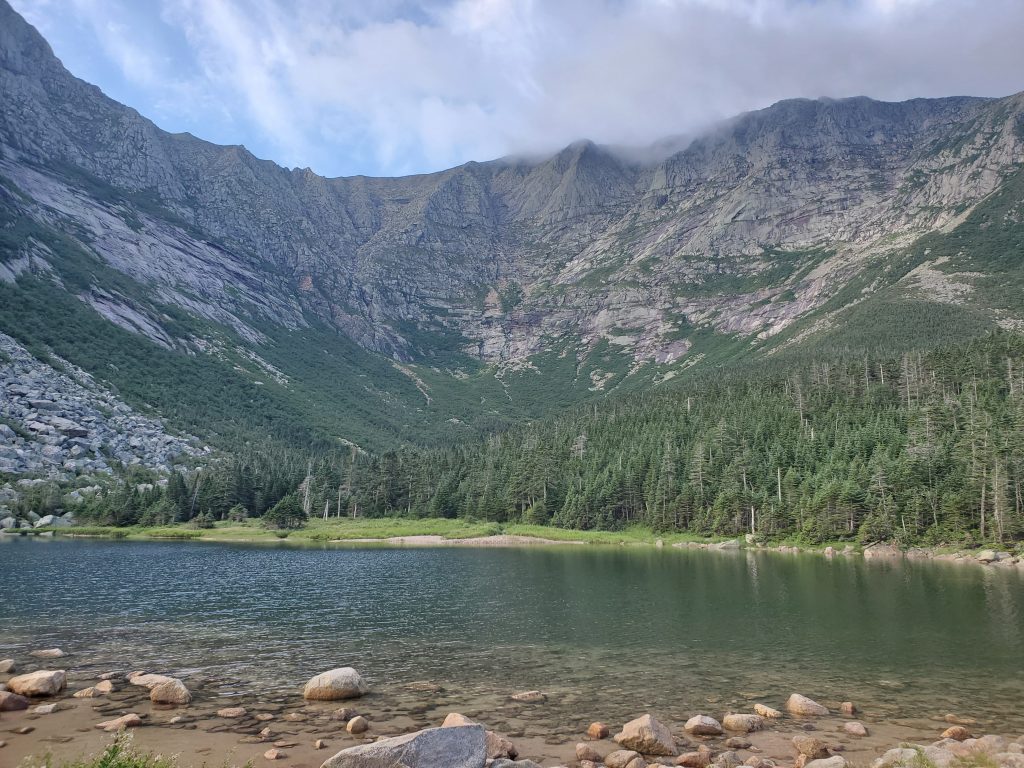
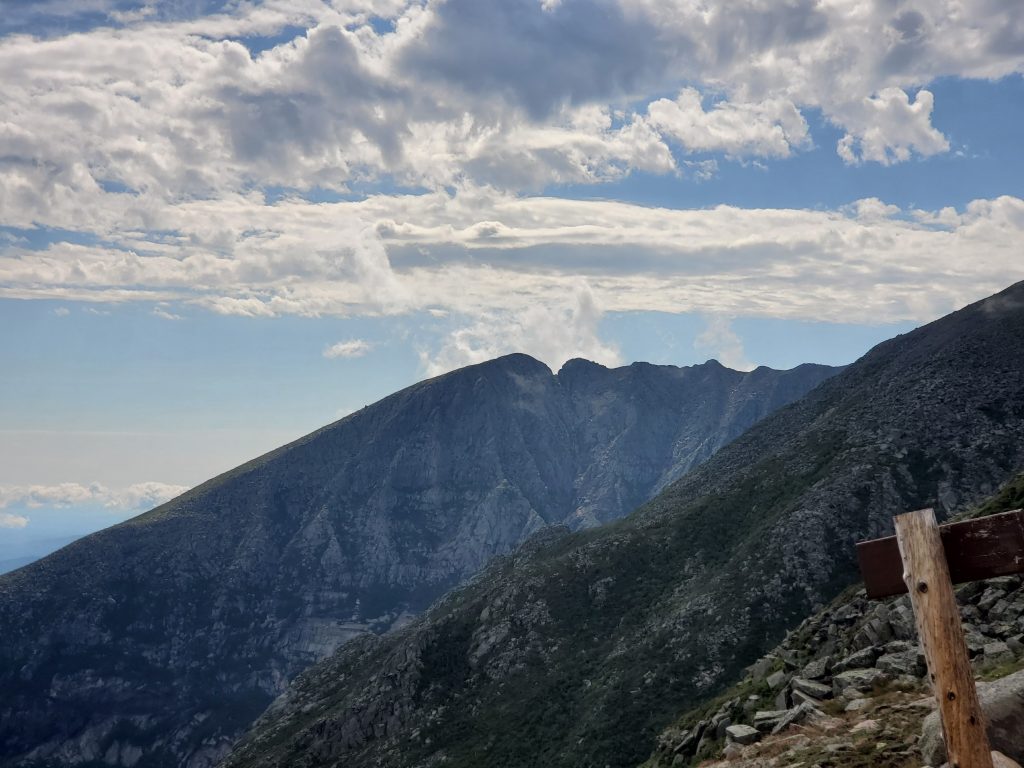
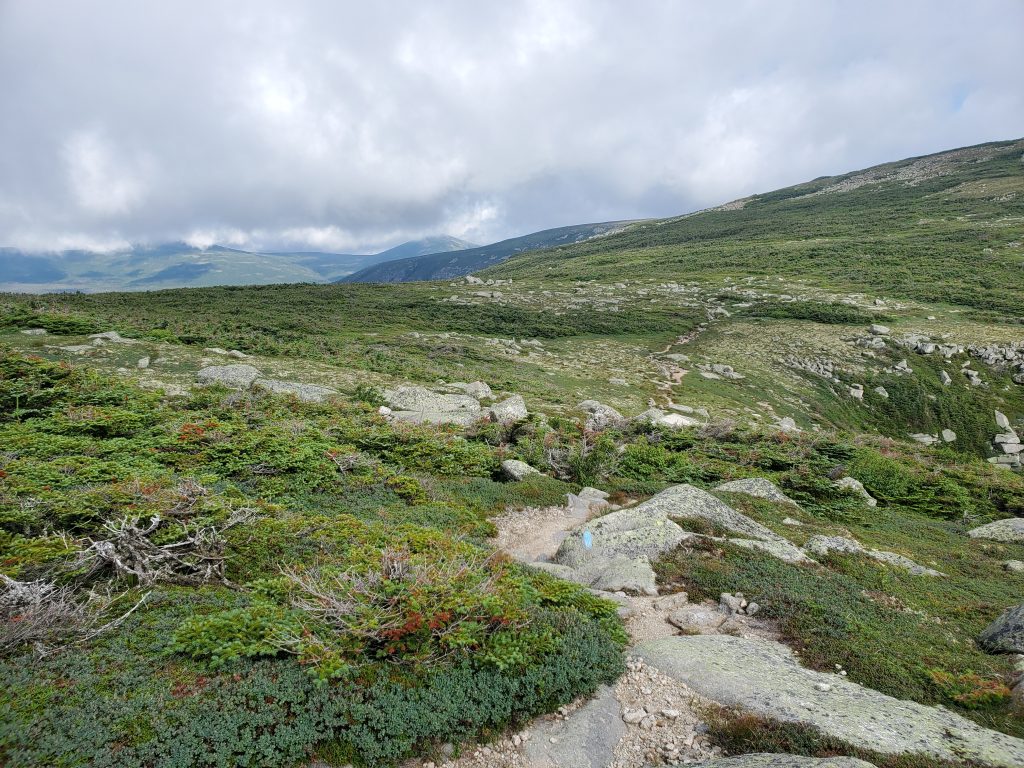
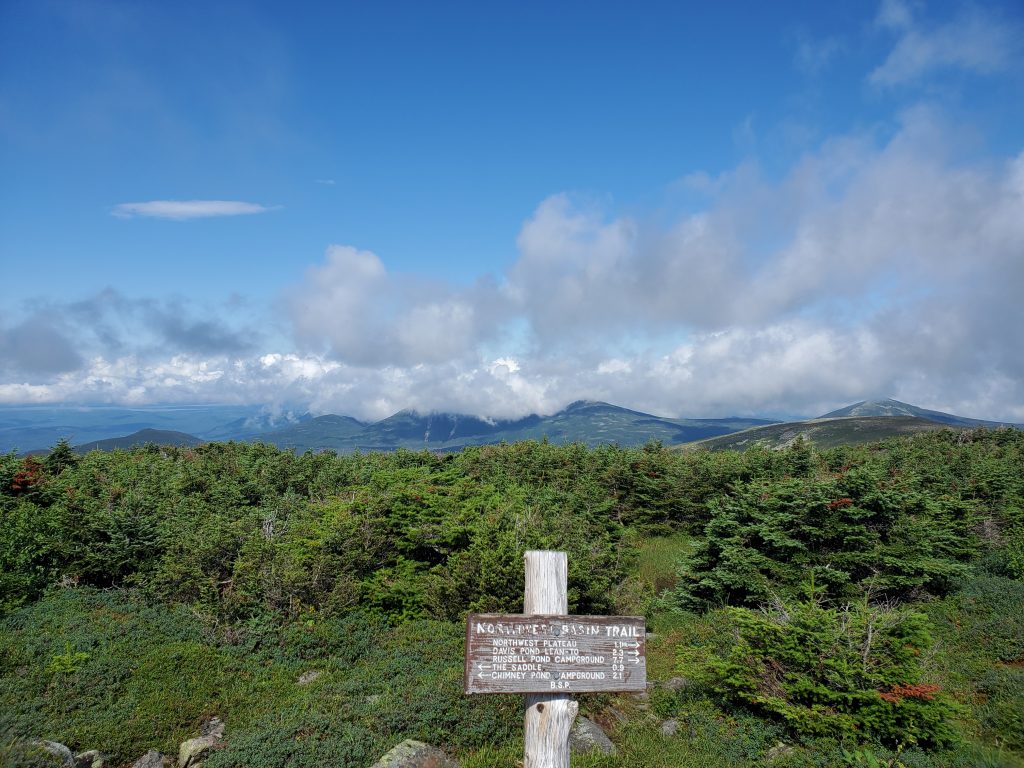
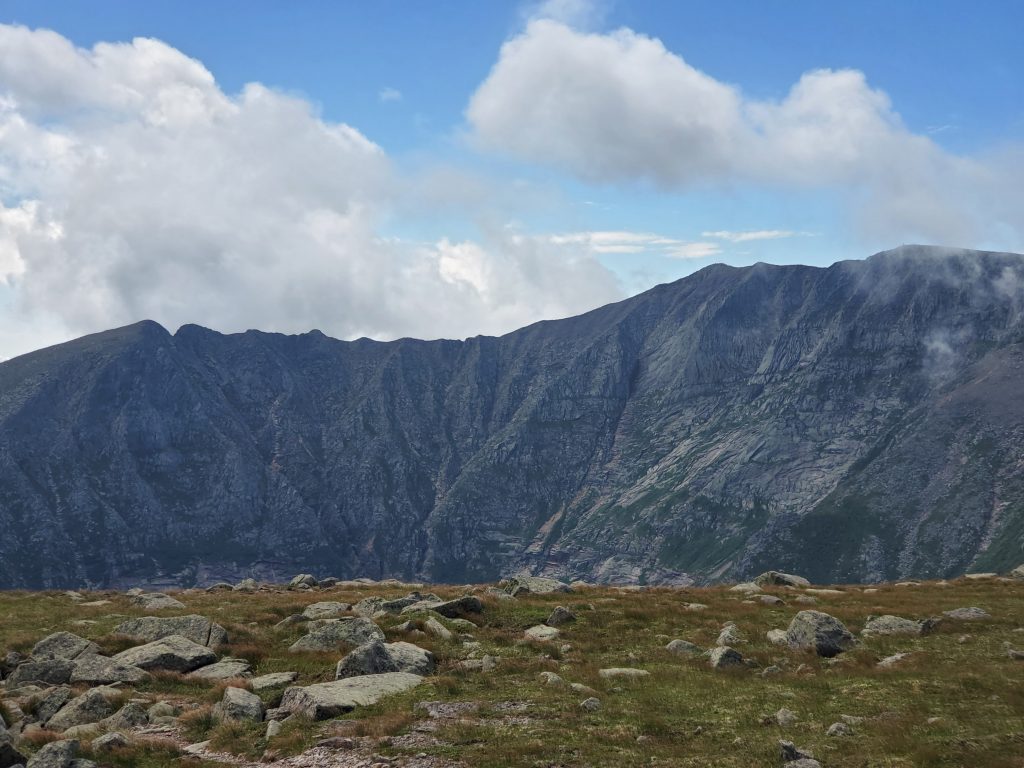
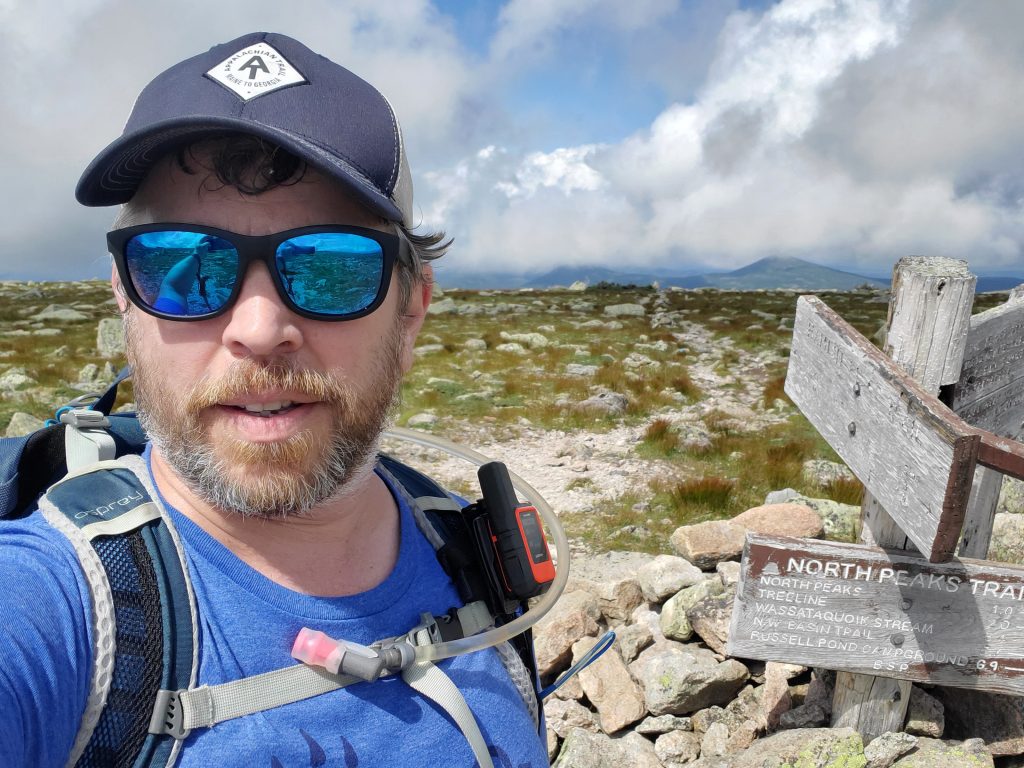
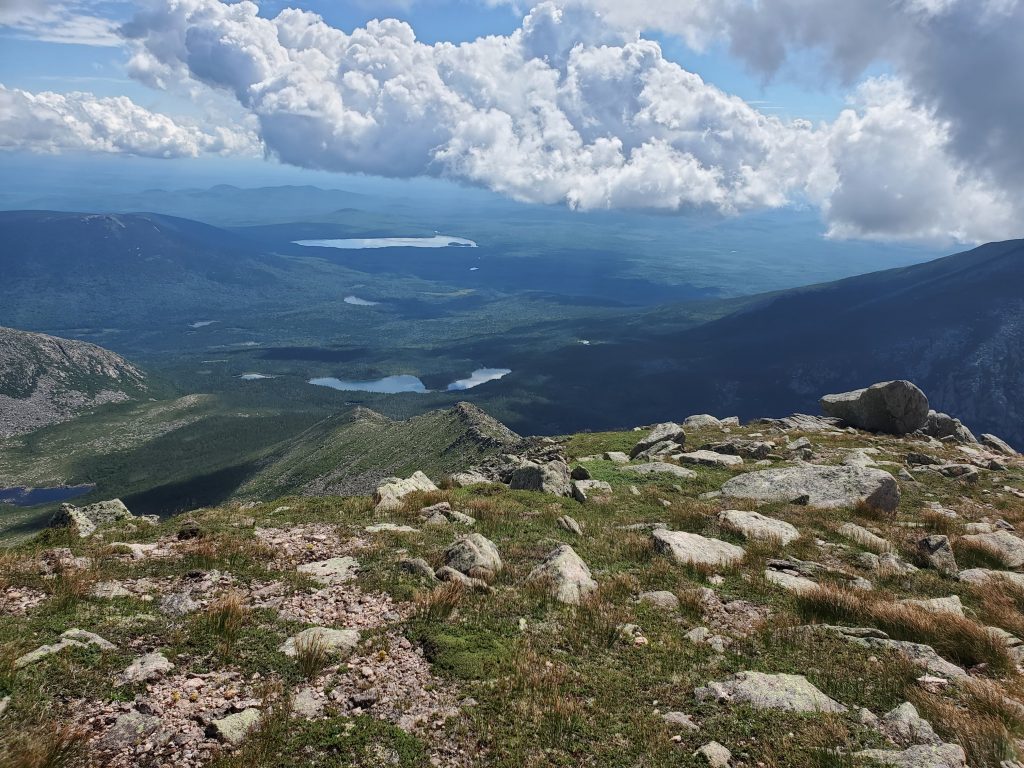
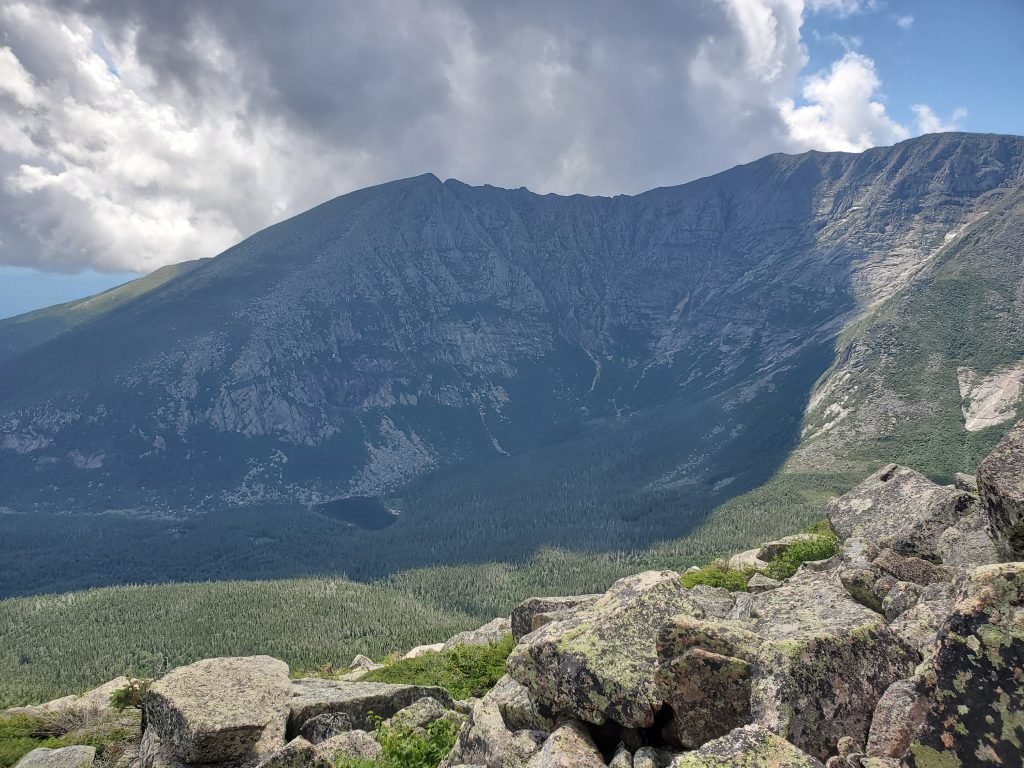
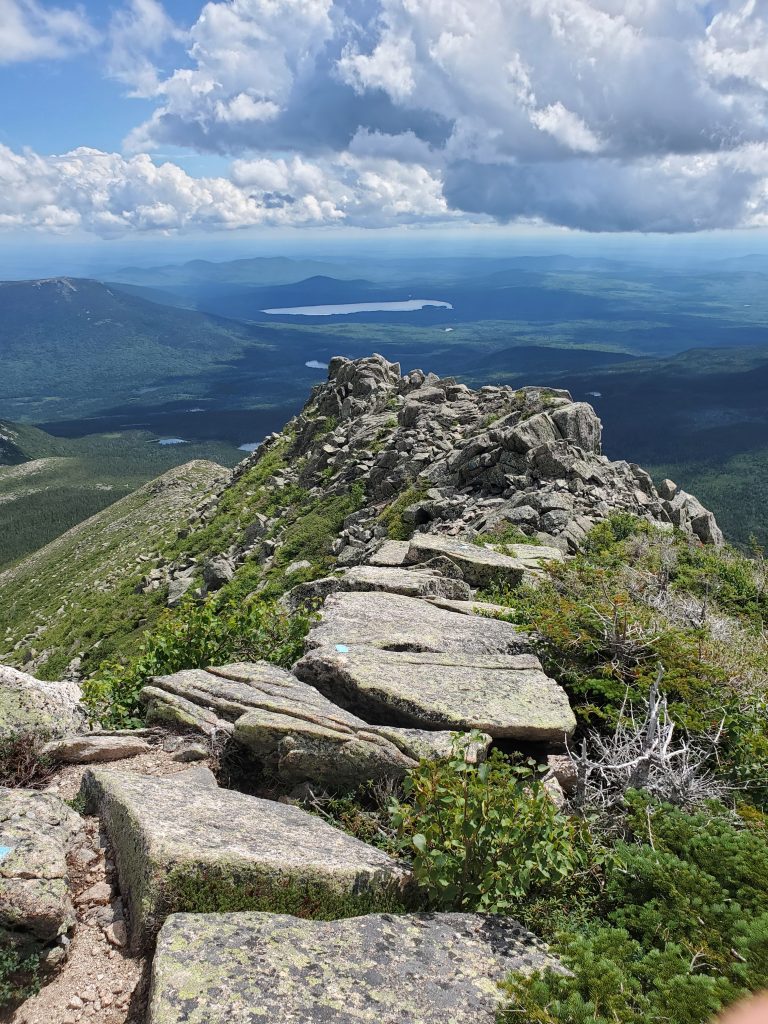
I actually made it to the trail head by 2 PM, I probably should have dawdled someplace to spend more time on the Greatest Mountain, but there had been Thunderstorms predicted (which did hit later), and I do not want to be above the treeline for that!
Anyway, on Day 11, we broke camp and headed home, having had enough of the woods to keep me charged for a while.
The final tally, from July 17 through July 31:
- 12 Tent/Lean-To Nights
- 83 miles of hiking
- 63 miles backpacking (50 on the Appalachian Trail)
- 20 miles Day Hiking
- 2 4K peaks (4 of Maine 14 accomplished)
- Maximum “Chill” Achieved
And because life is learning, here are some of the things I earned while on the trail:
- There are many unprepared people on the trail
- Toilet paper can be considered disrespectful to your bum (thanks, Sheetrock!)
- You can still hitch-hike from Tennessee to Maine, even during the COVD19 pandemic
- Take the swim now, no matter what the map says is coming up
- Loons and seagulls are territorial and will argue over territory in the middle of a remote deadwater
- You can never have too many aluminum boats chained to trees at a remote site
- Curiosity could have killed the frog
- Italian Salame and Cheese should be a backpacking requirement, no matter the carbon footprint
- Most through-hikers do not wear watches, but they all want to know what time it is
- Permethrin works!
- Low-bush blueberries blossom first, and ripen first in the sun
- Dragonflies will pose for selfies
- Maine bugs do not apparently bother me as much as everyone else
- My new Salomon boots were a great choice – stayed dry and only a single blister (due to tying wrong)
- There’s lots of wiggle room between the contour lines
The boots are now my new favorite, Salomon will get a rave review from a new fan. The food was entirely consumed, none left. And my feet? They are fine and ready for a few more miles, after a short rest. Already planning the next excursion… probably the Bigelows.